Tim-D-AmazonBookPubl 1.3 to 6.2
Tim-D-AmazonBookPubl 1.3 to 6.2 - Part 1

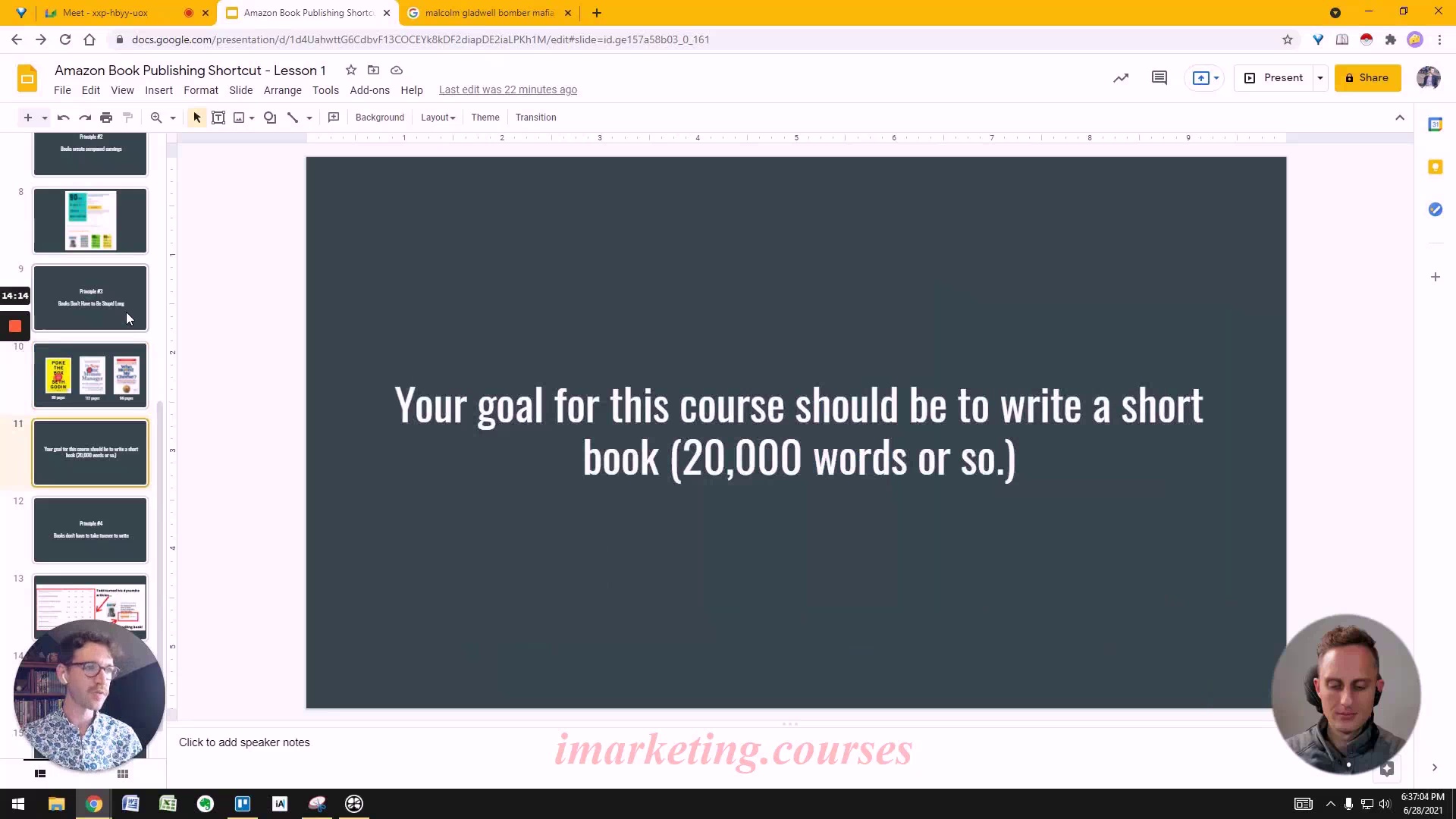

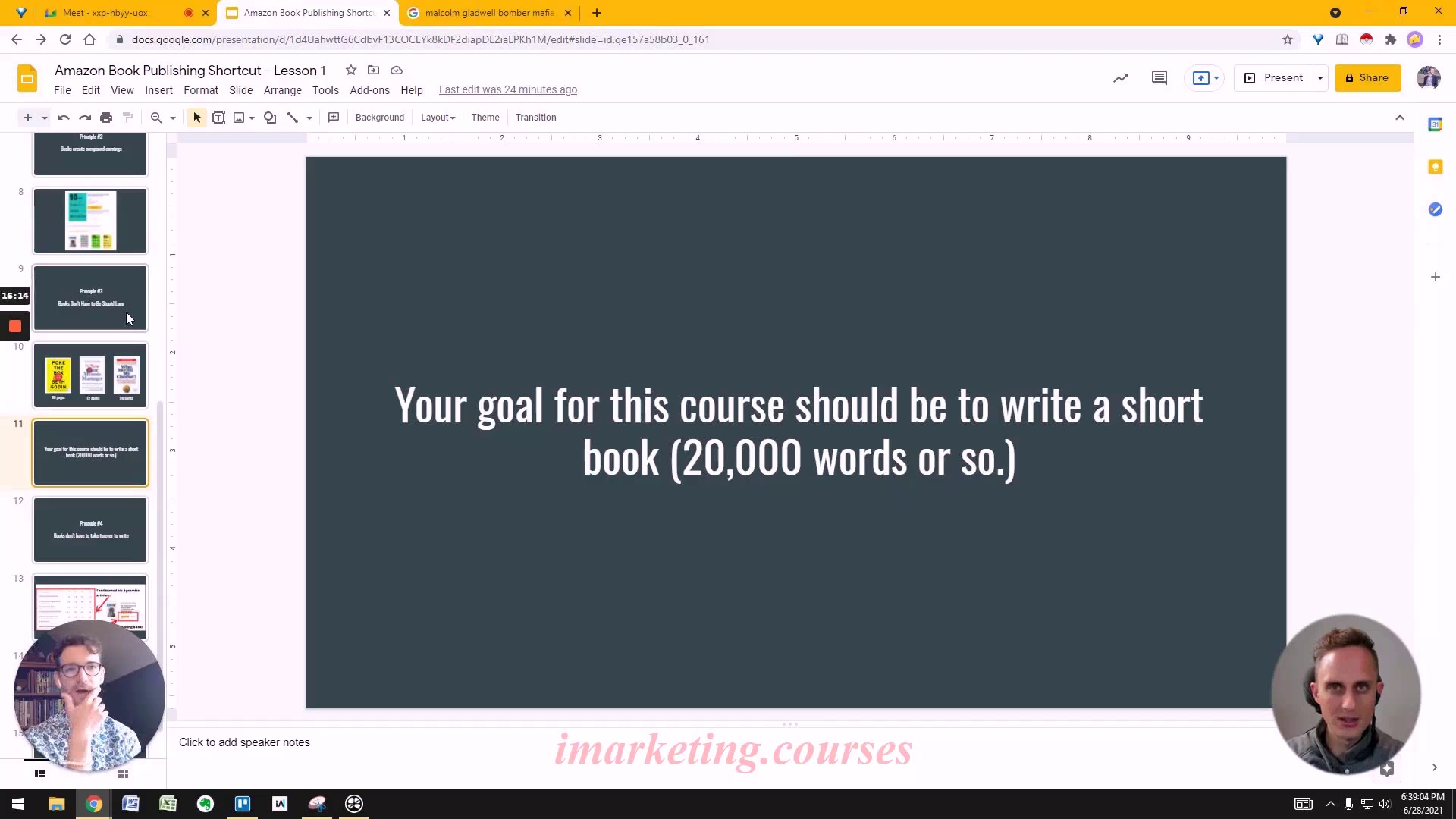

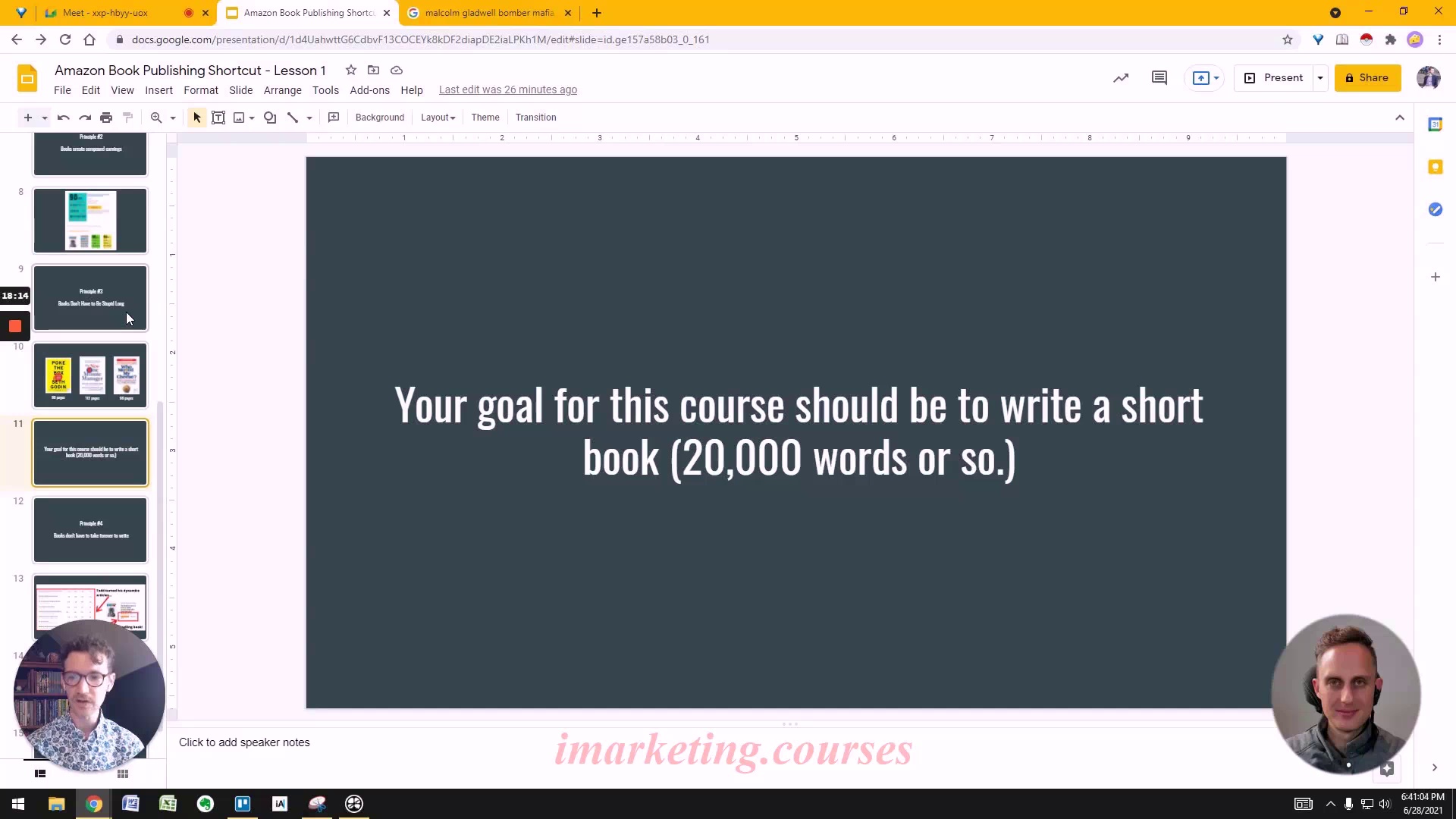
The narrator argues that books don't need to be extremely long or take a long time to write. Given modern publishing options, authors should aim for around 20,000 words, which is achievable in weeks and provides enough content for a tight, focused read.
Shorter attention spans mean readers want more succinct books that get to the point quickly. The narrator cites examples of successful online writers focusing on 4-5 minute reads.
For those who already create content regularly, like blog posts, a book is essentially a collection and packaging of existing work. Repurposing content allows a book to come together quickly without starting from scratch.
The key is to stay focused on your niche and aggregate relevant content. With the right strategy, authors can publish helpful, meaningful books without major life disruption or waiting years to compile enough new material.
.Tim-D-AmazonBookPubl 1.3 to 6.2 - Part 2







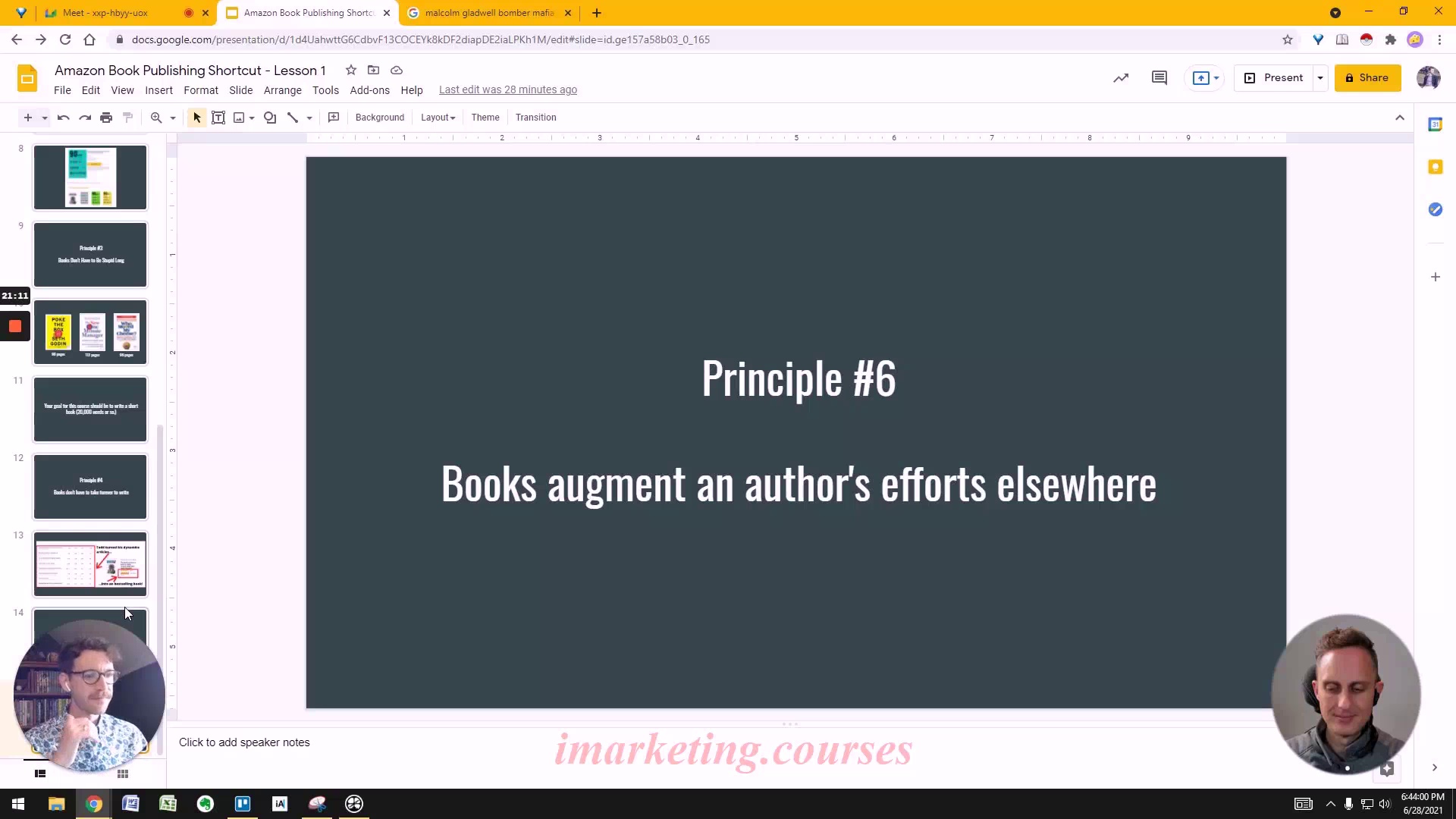
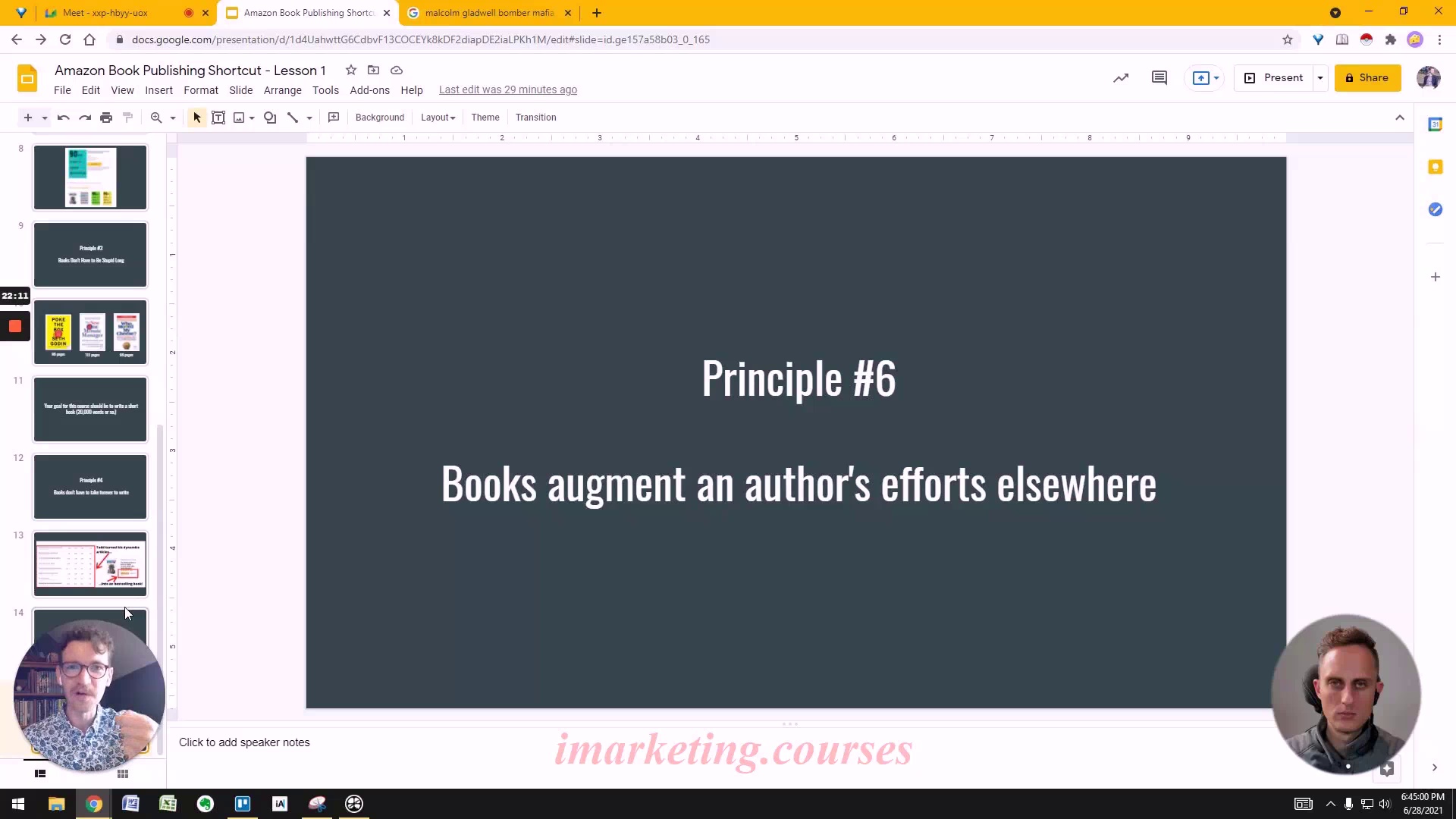
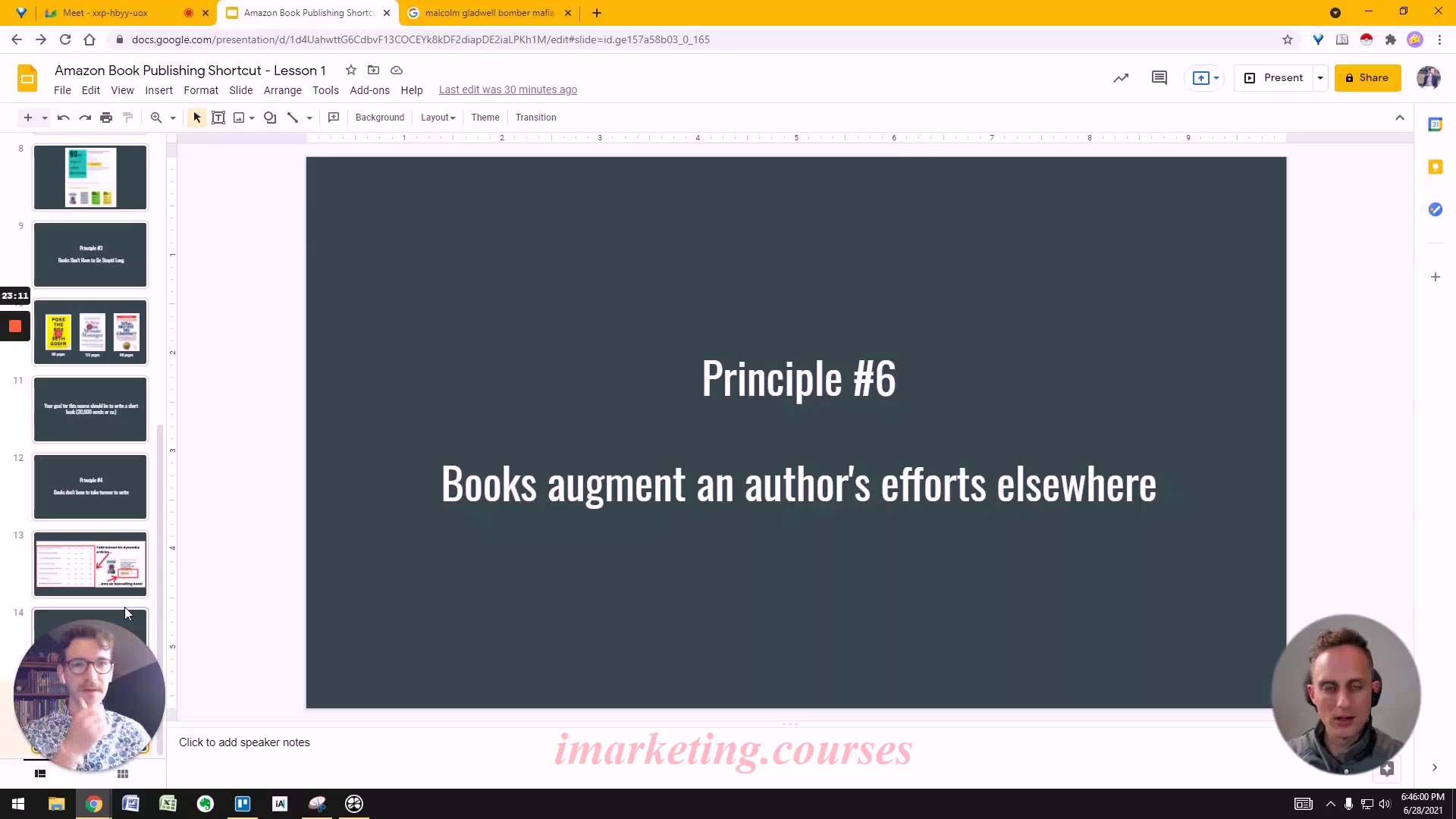
Books are an easy transaction for readers - they know what they are getting if they pay $20-$25. We are used to bartering and exchanging goods. Getting people to buy your book turns them into fans and potential future customers.
A book allows other money-making opportunities to thrive. Books build deeper relationships with readers who invest time and money into them. Business often starts from book sales, which come from free content promotion.
People won't buy $1,000 coaching after reading free content. But a book purchase validates interest at a reasonable price. Books lead to referrals and other unexpected income sources.
Books earn thousands in passive income. No one gives someone $1 million right away - they buy their book first to become familiar with them, then move up to high-ticket offers.
.Tim-D-AmazonBookPubl 1.3 to 6.2 - Part 3











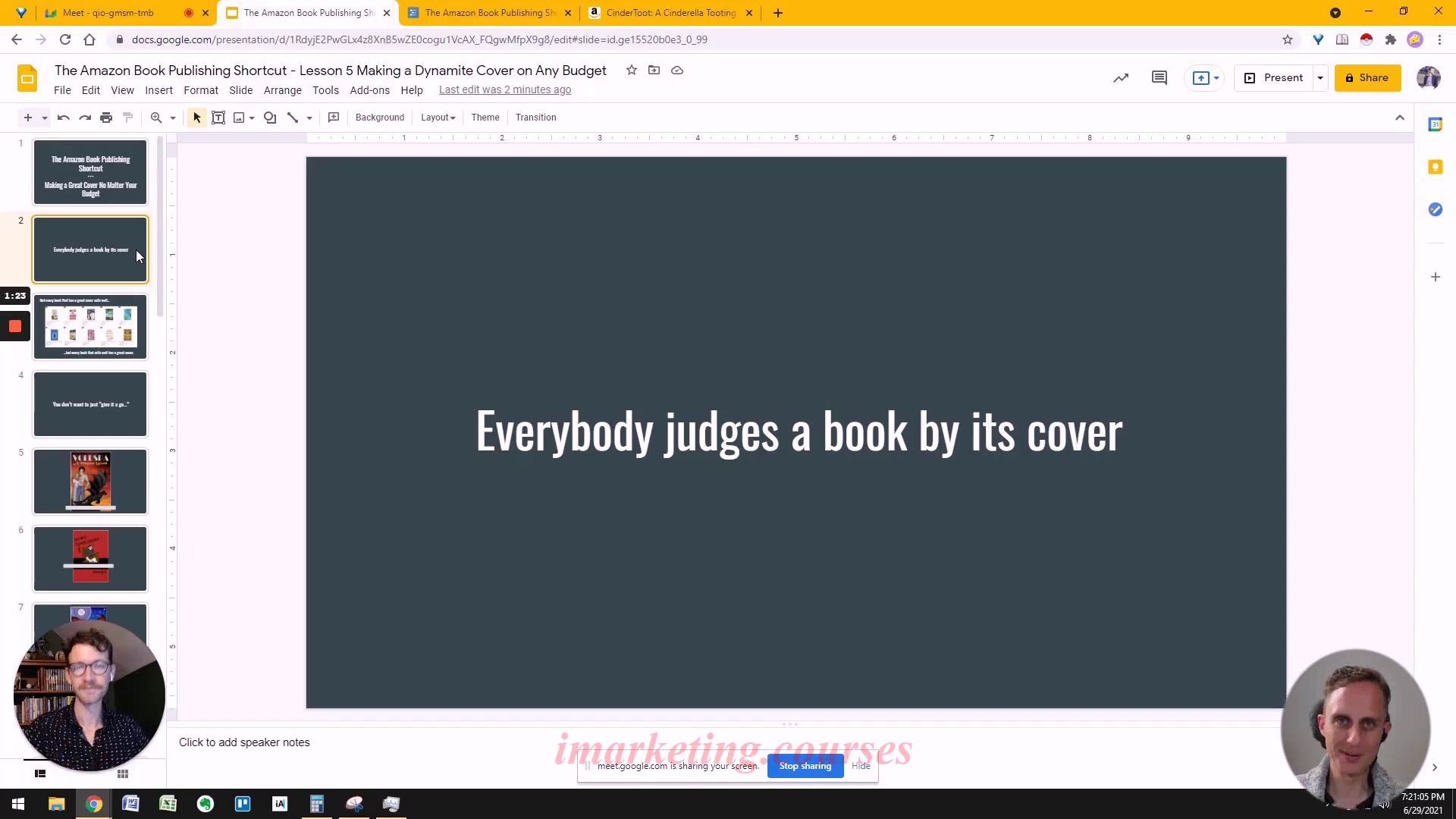
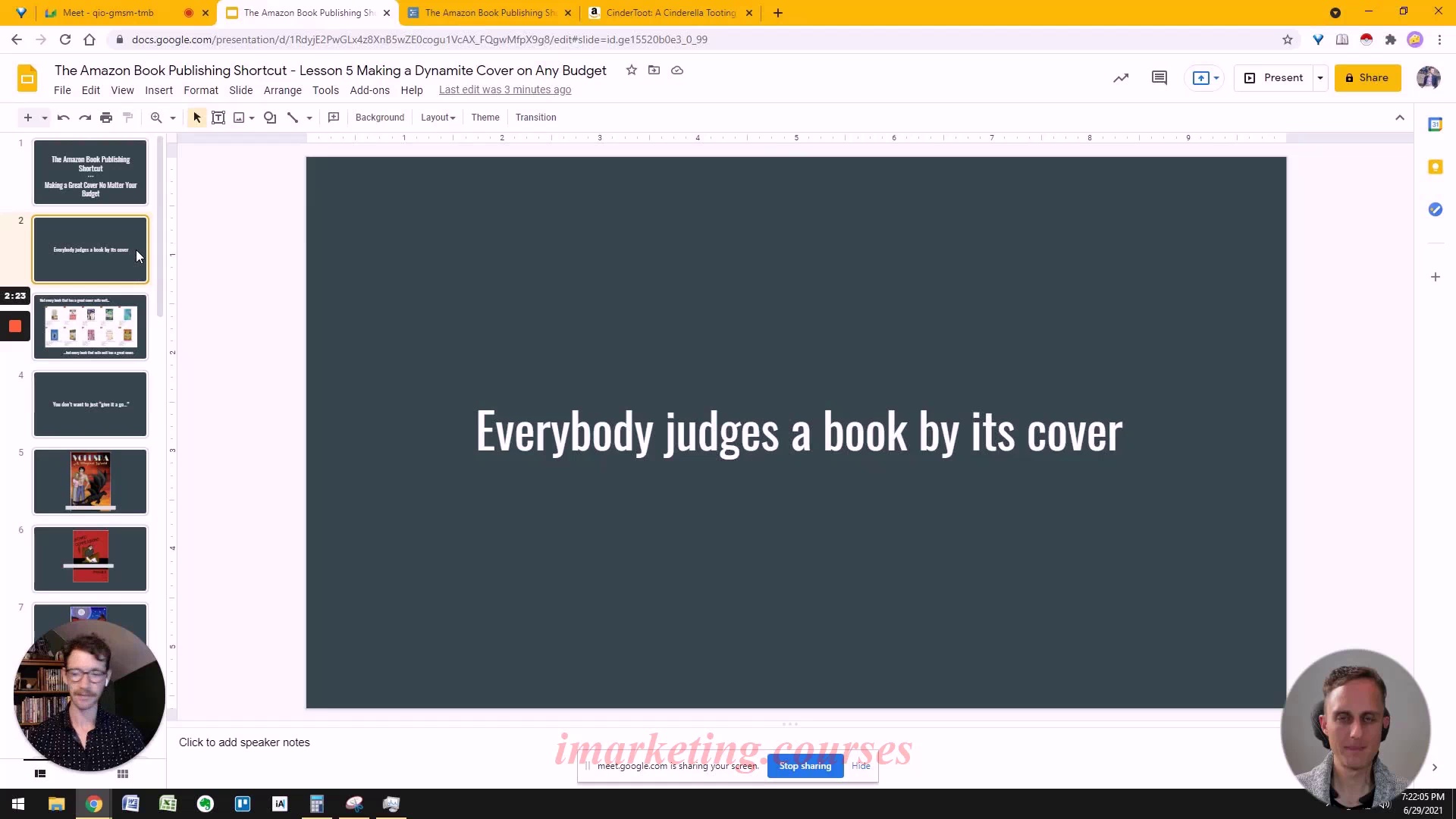
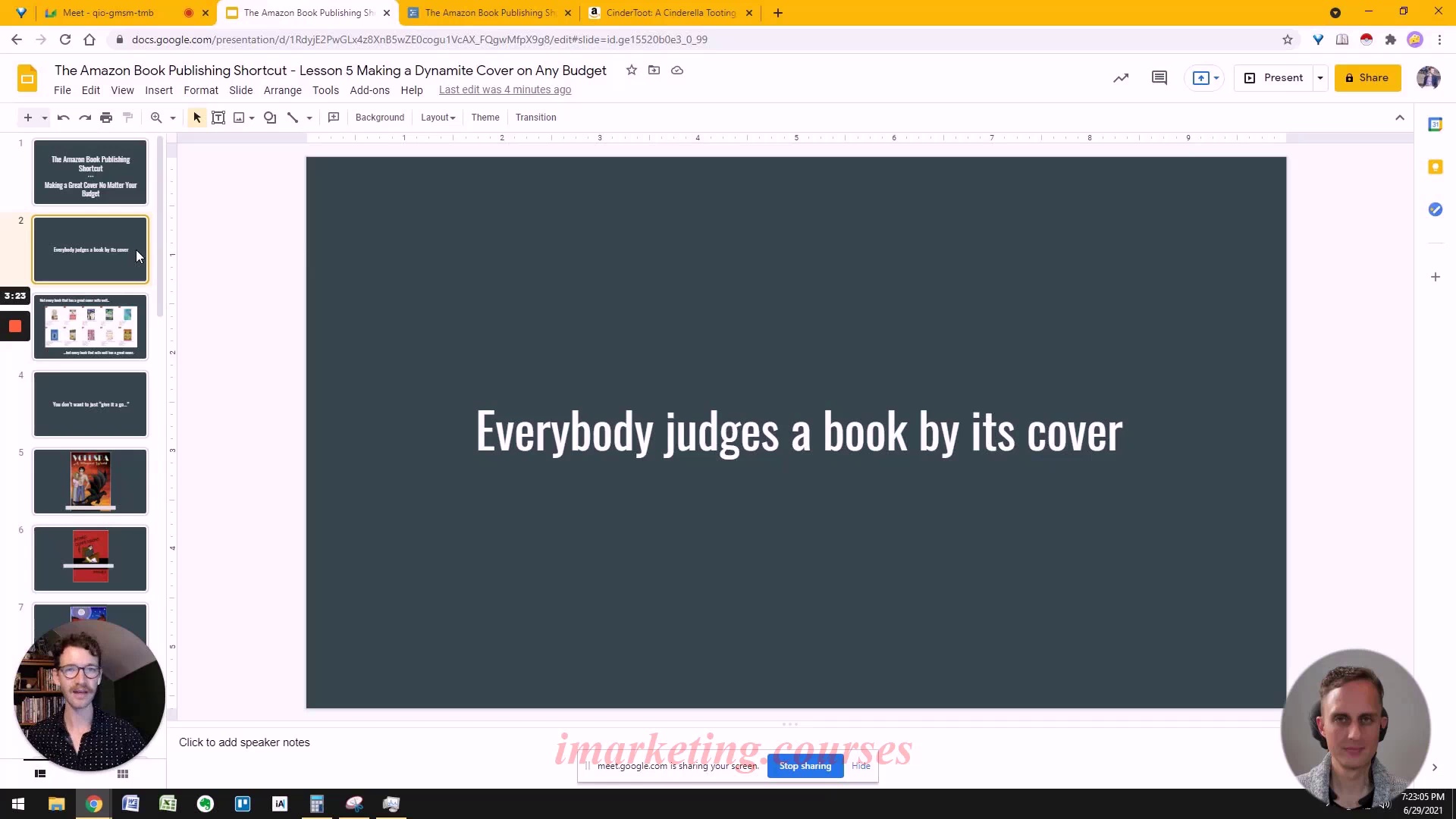
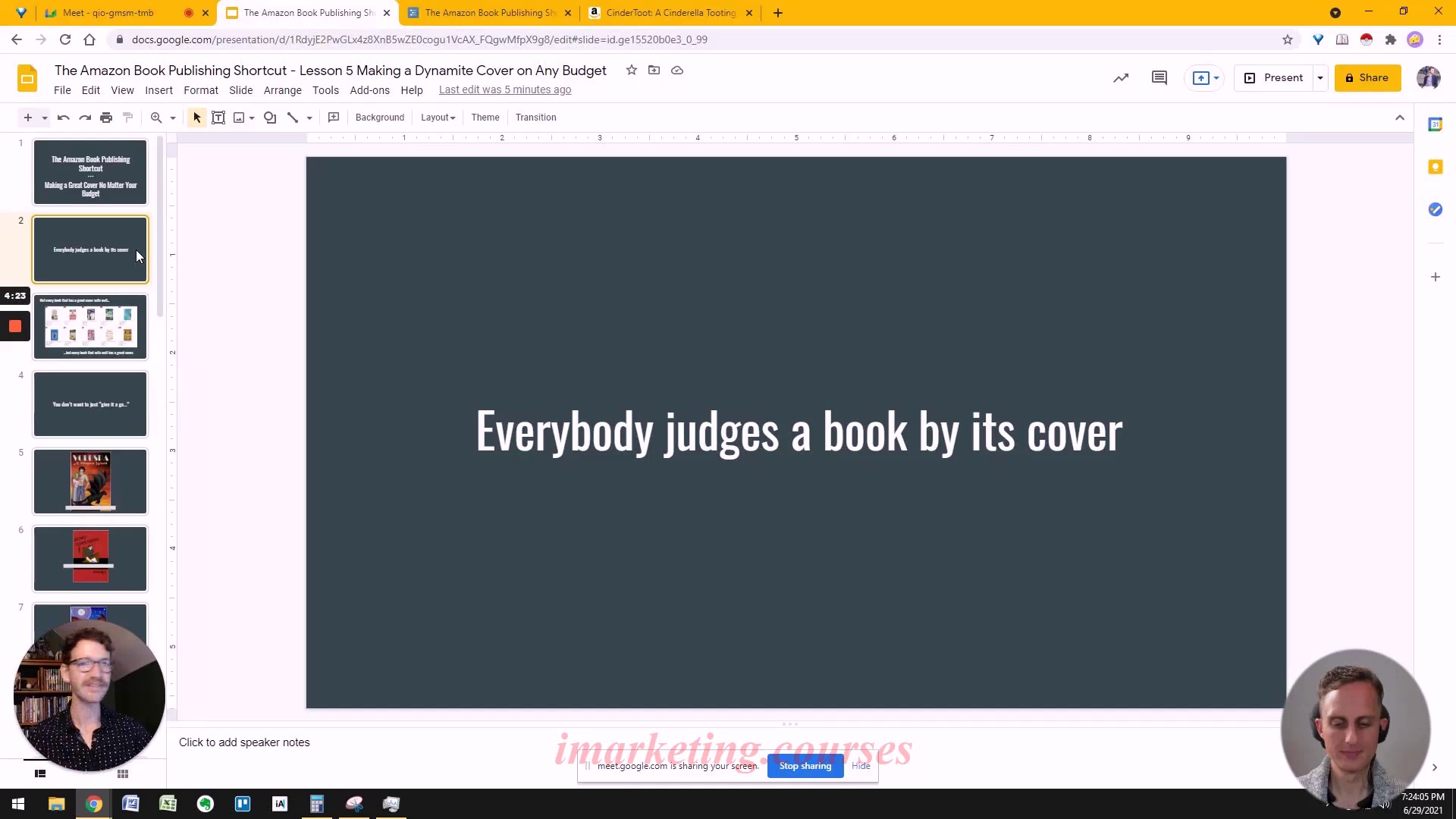
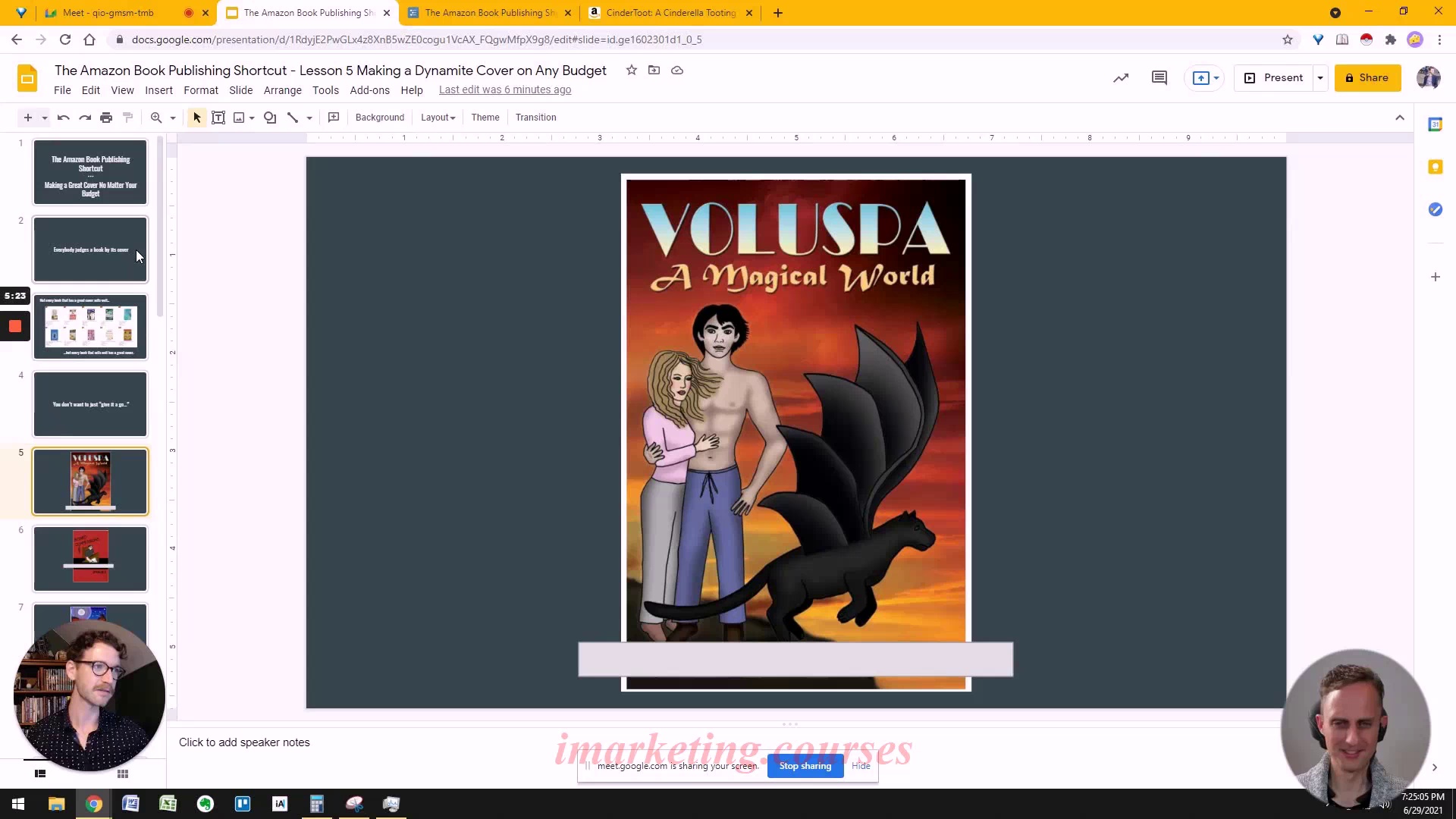
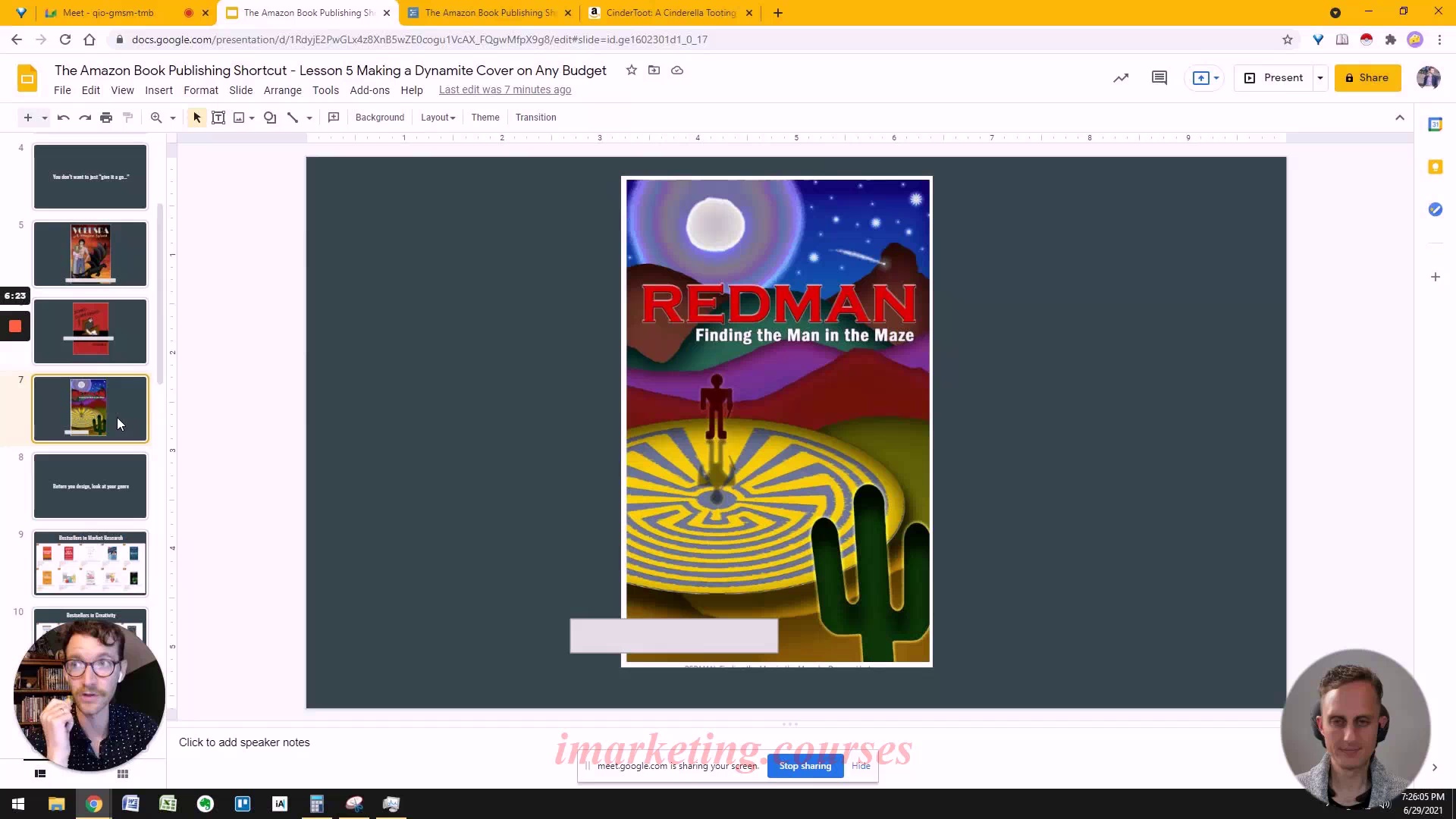
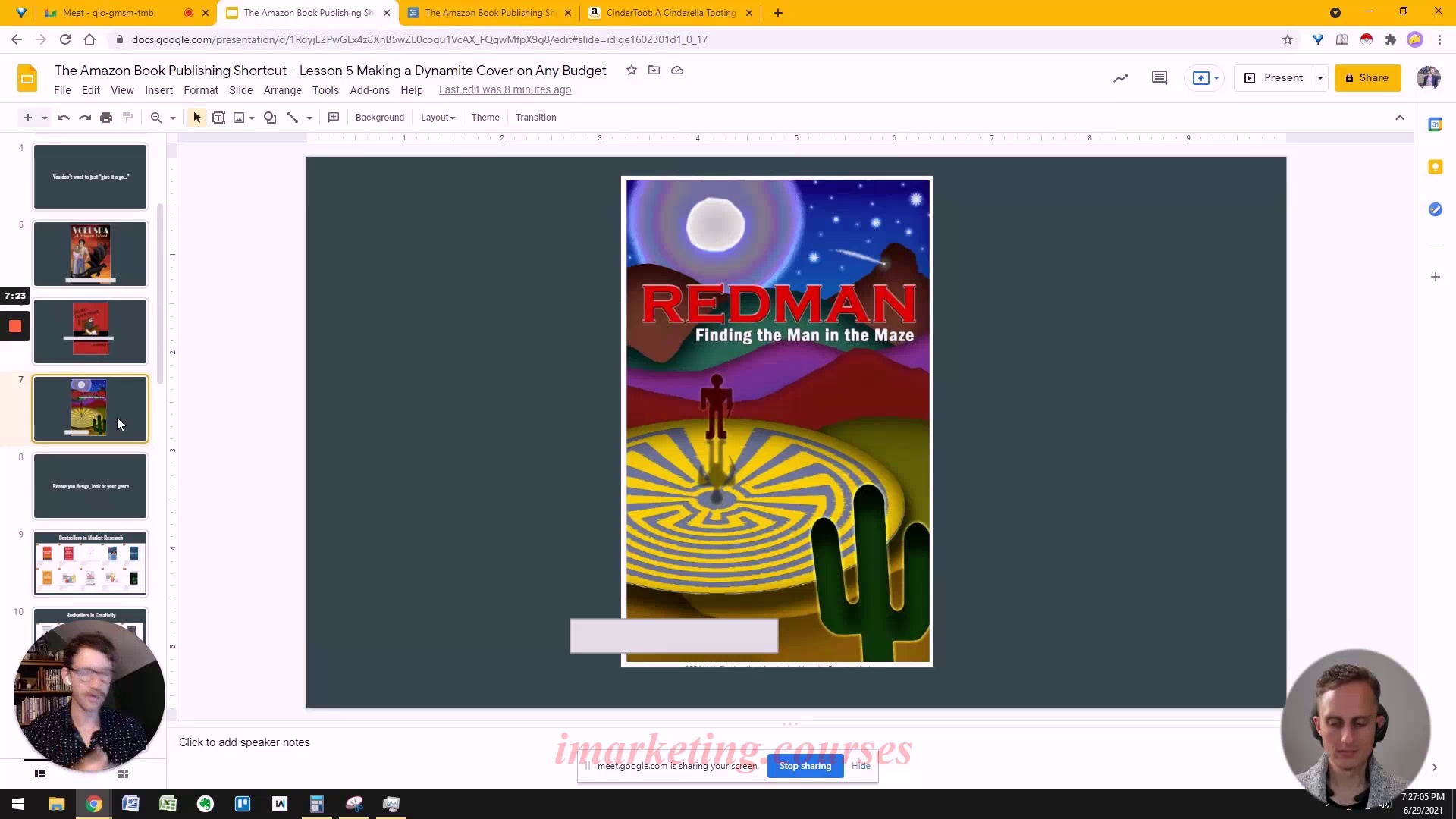
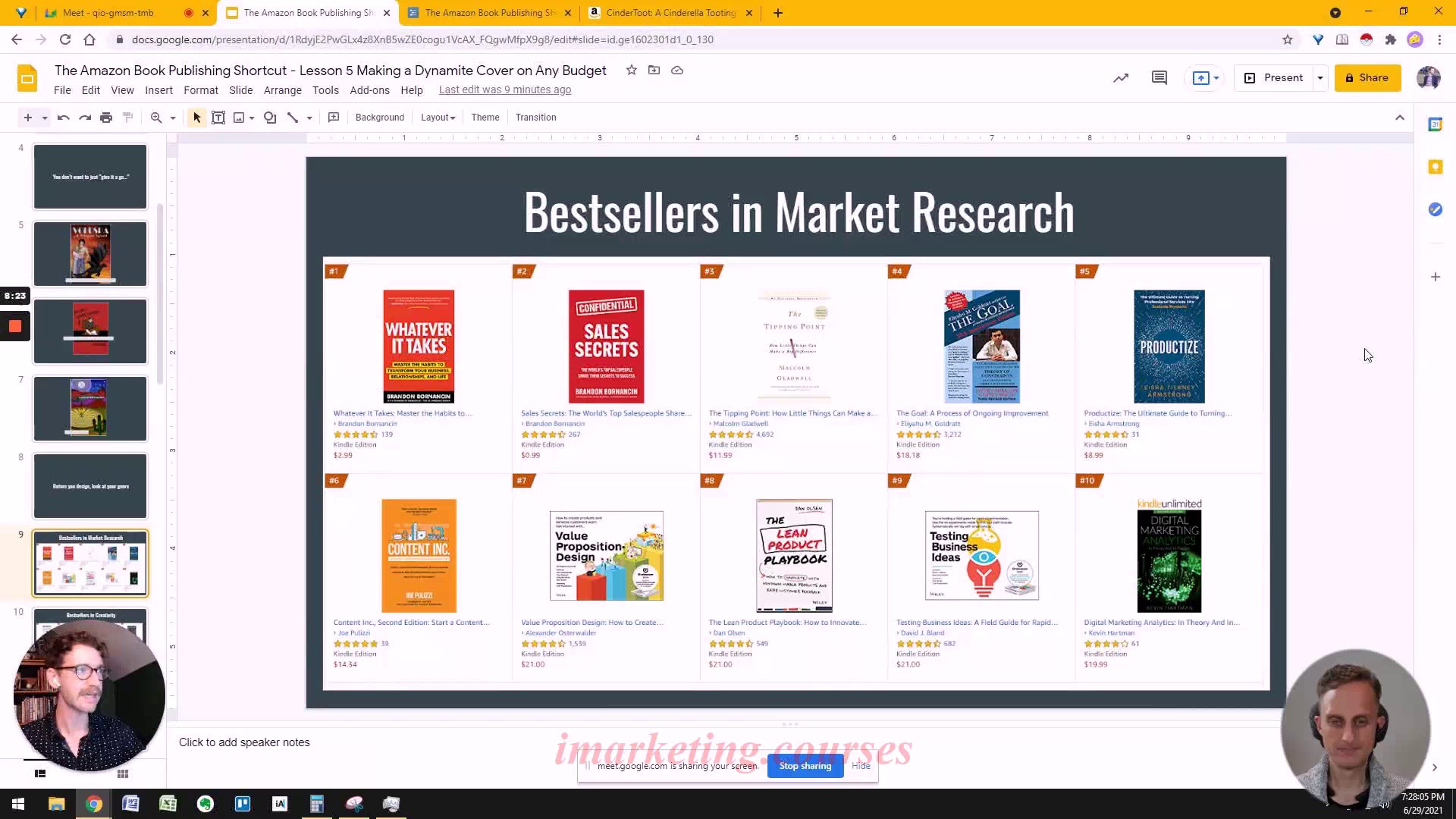
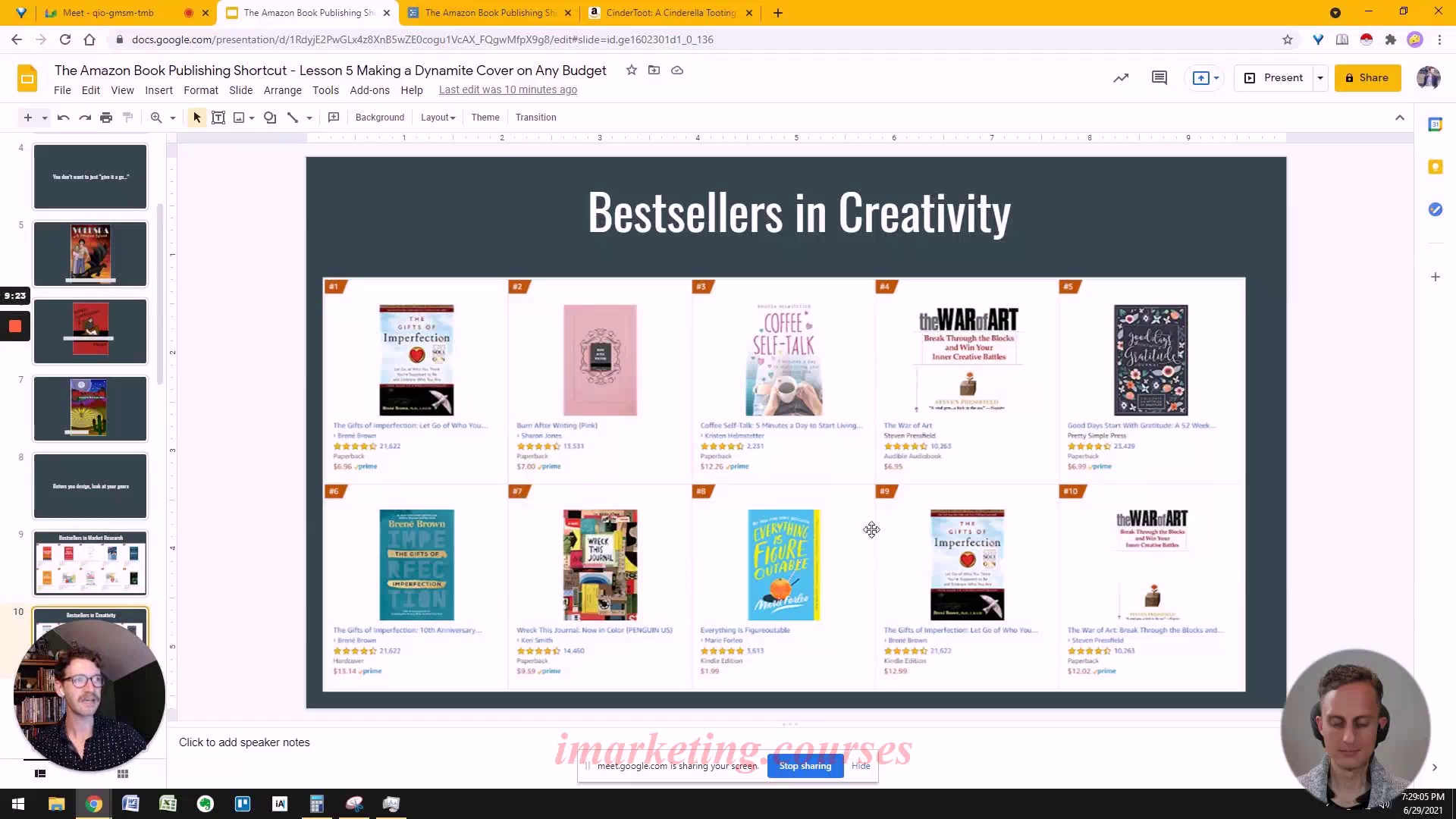
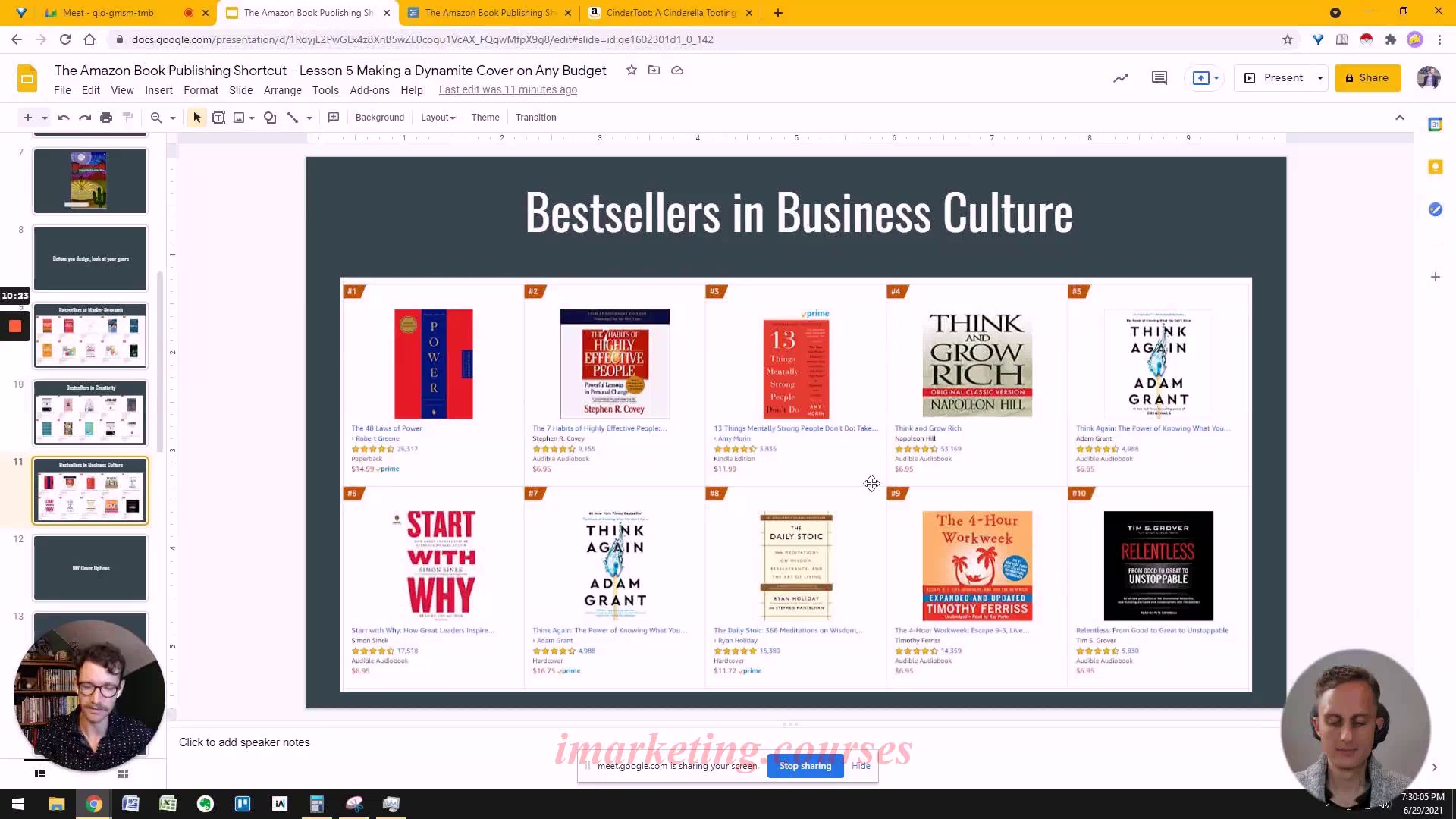
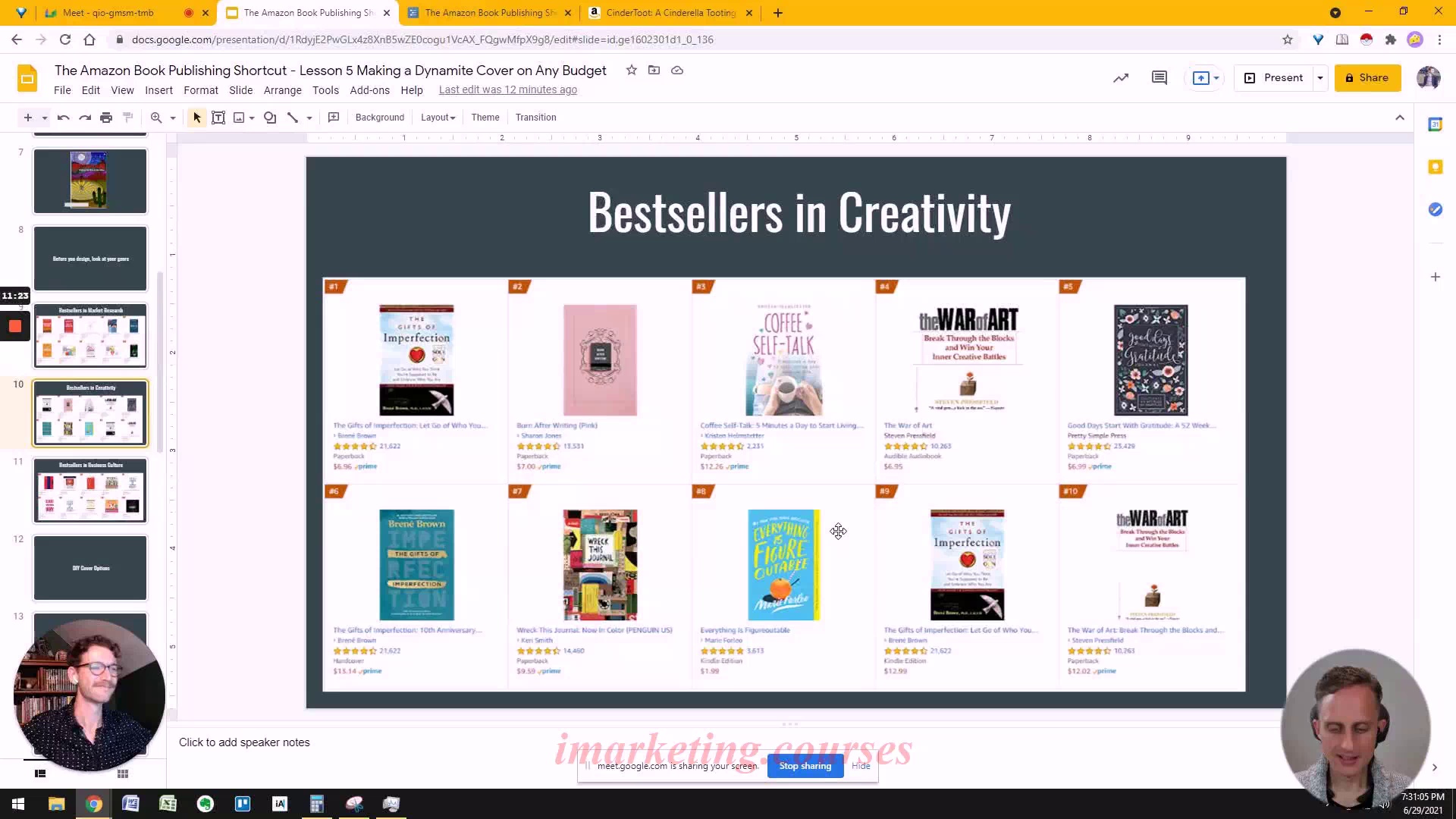
The narrator emphasizes that a book's cover is the most important part of the marketing because it sets expectations and grabs attention. He shares examples of bad covers that use amateur illustrations or confusing designs. These likely won't attract readers even if the book content is good.
The narrator recommends researching covers of top sellers in your genre to identify trends in colors, images, fonts that work. Notice what stands out. Use this to guide your own cover design. He shows examples from market research, creativity, and business categories that illustrate different trends. Market research has bold colors and big text. Creativity allows more variety. Business is straightforward with obvious titles.
The narrator says to apply your personal taste on top of studying trends. He gives the example of letting the illustrator riff on key themes from the book. The goal is matching reader expectations so the cover doesn't look out of place. A mismatch between cover style and book genre is something to avoid.
The key is strategically designing an appealing cover within your budget. Skimping on a DIY approach often fails. A great cover enables profitable marketing down the line through increased engagement and sales.
.Tim-D-AmazonBookPubl 1.3 to 6.2 - Part 4






















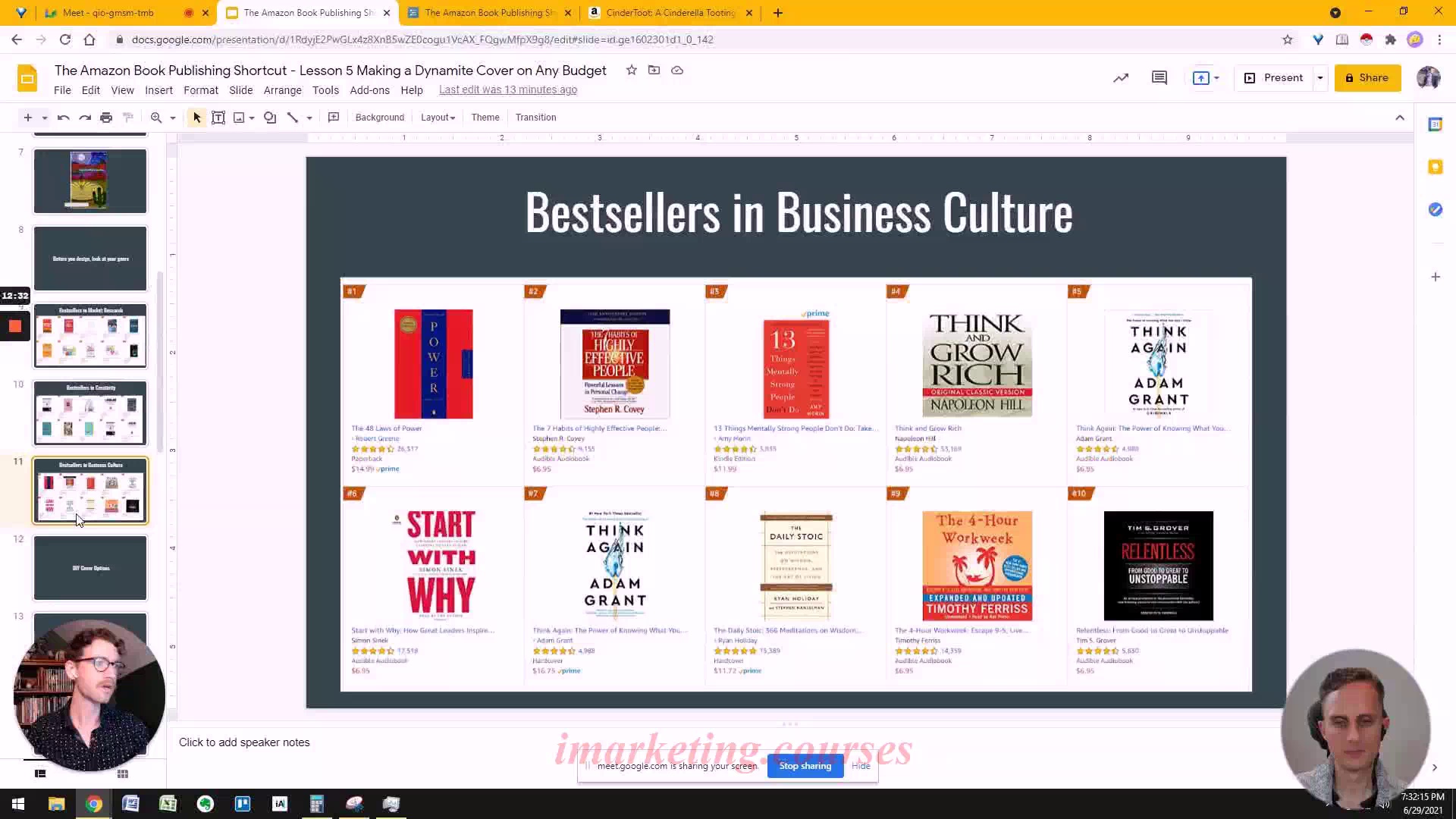
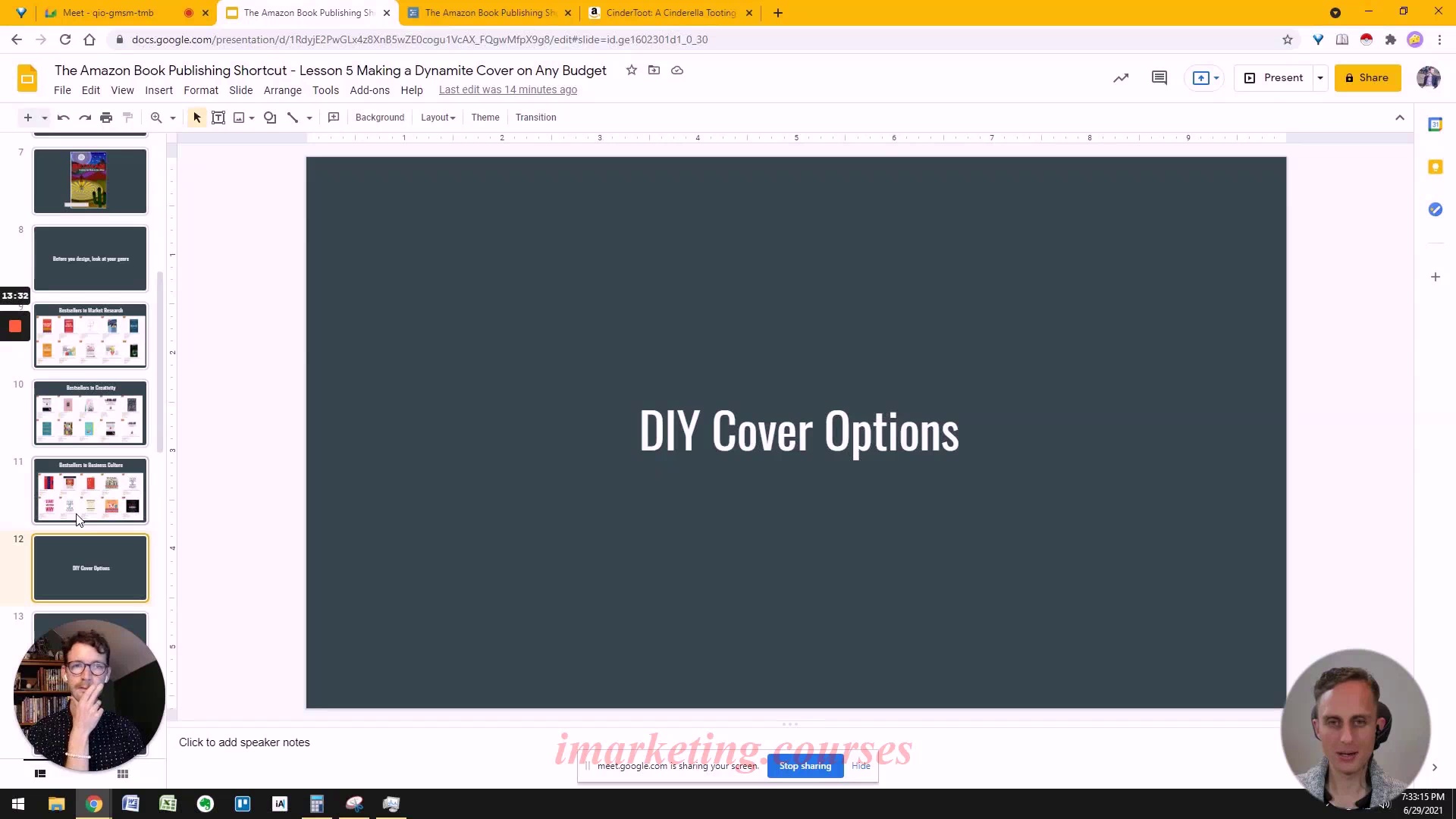
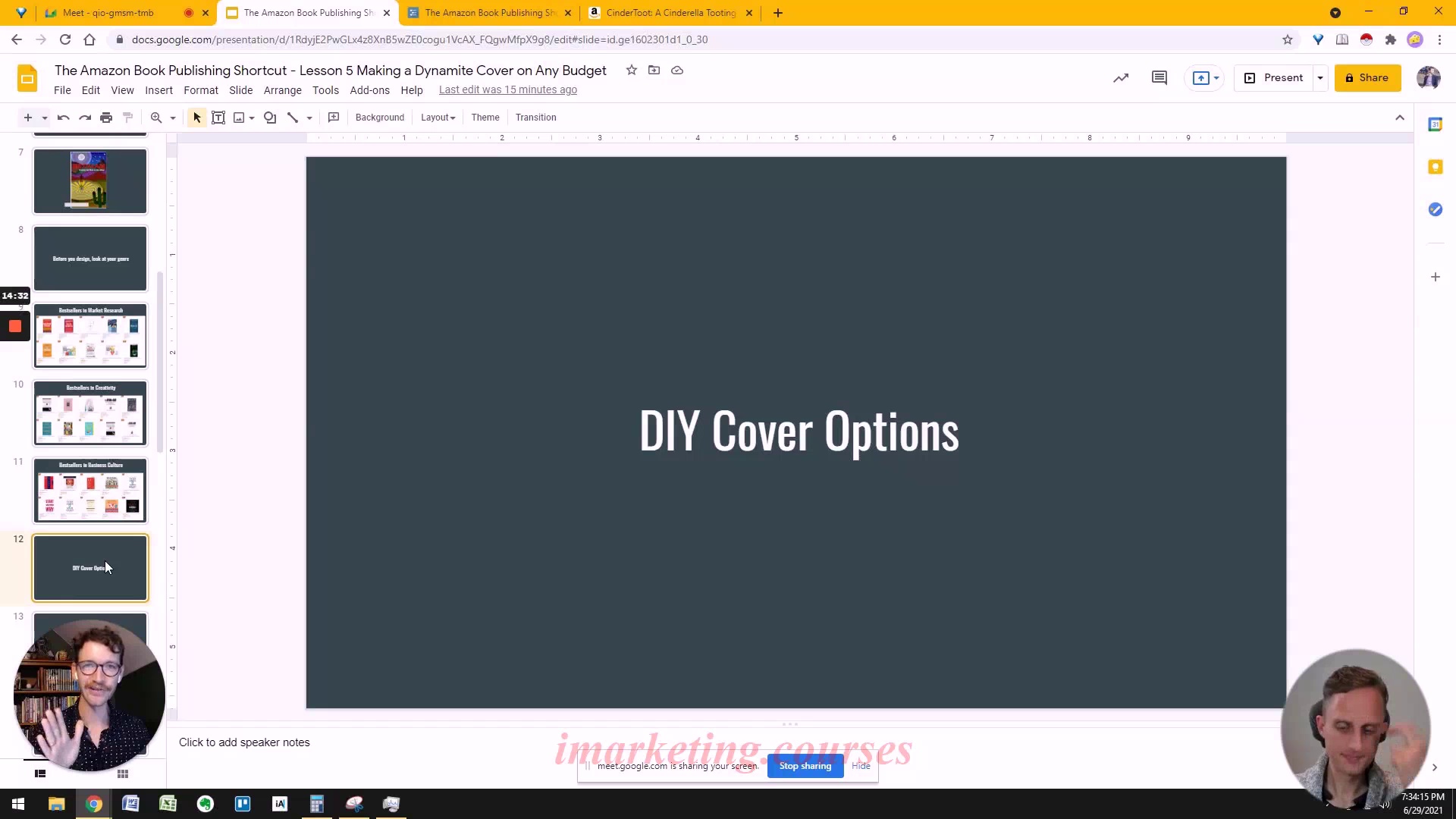
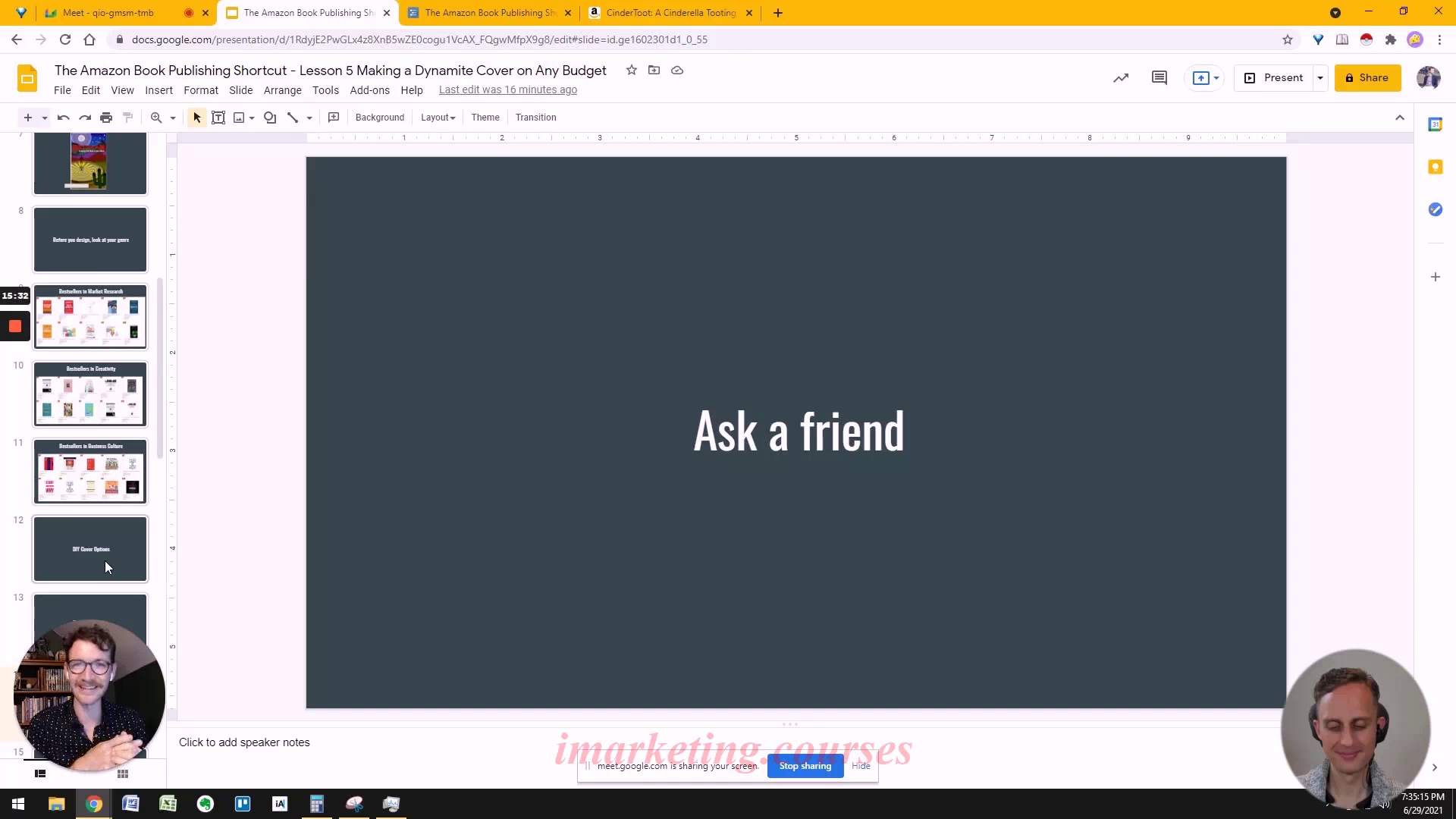
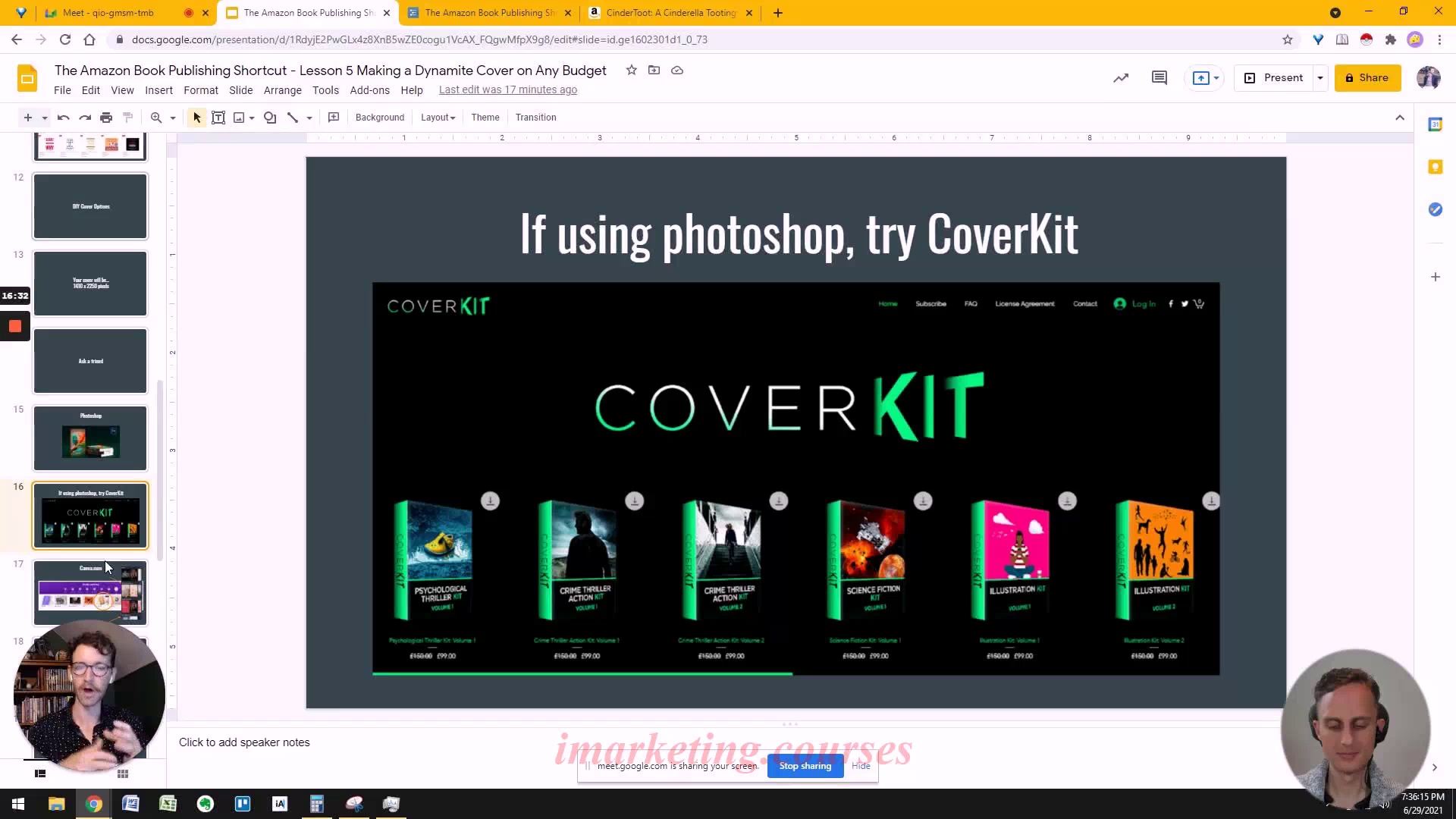
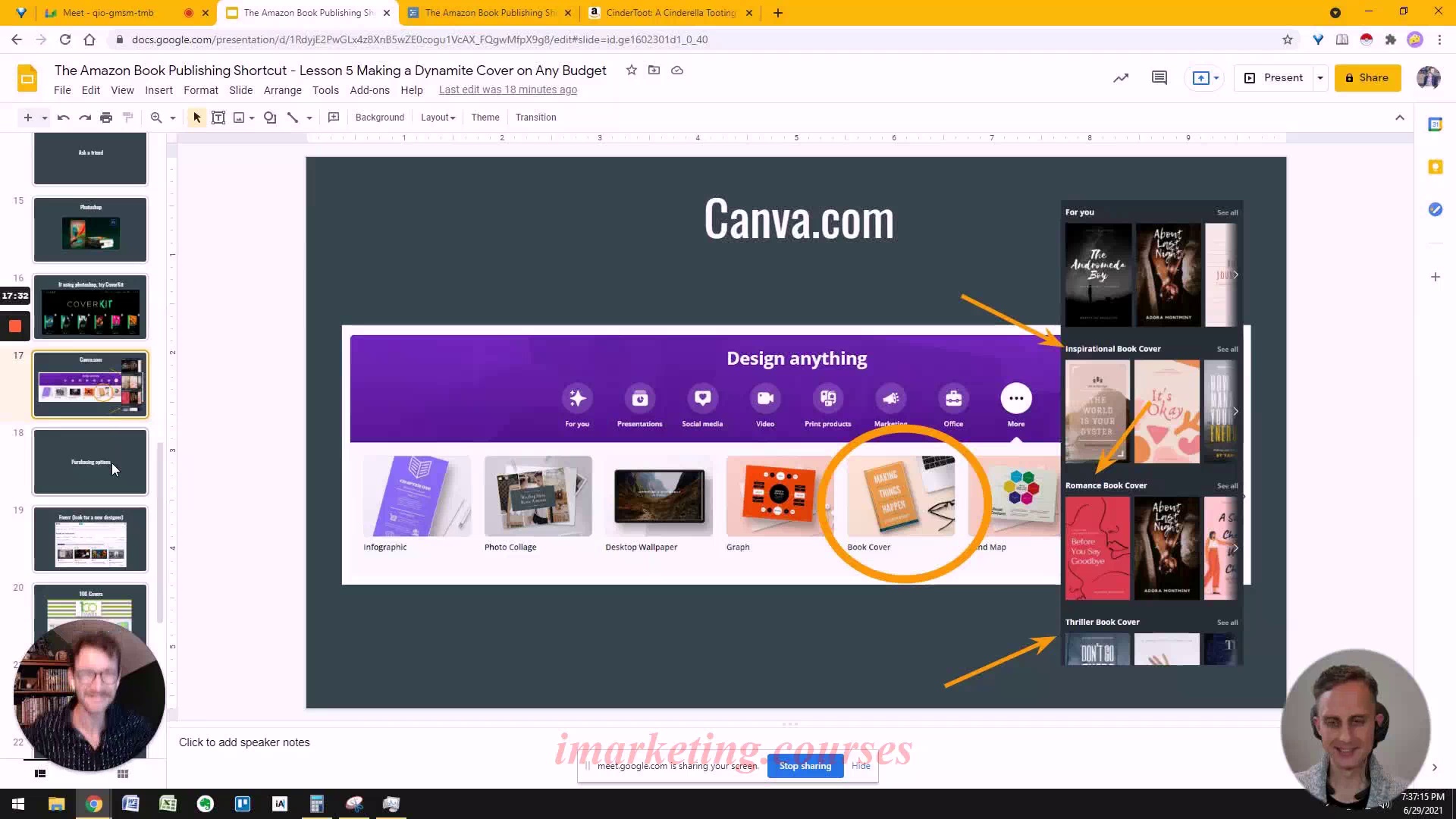
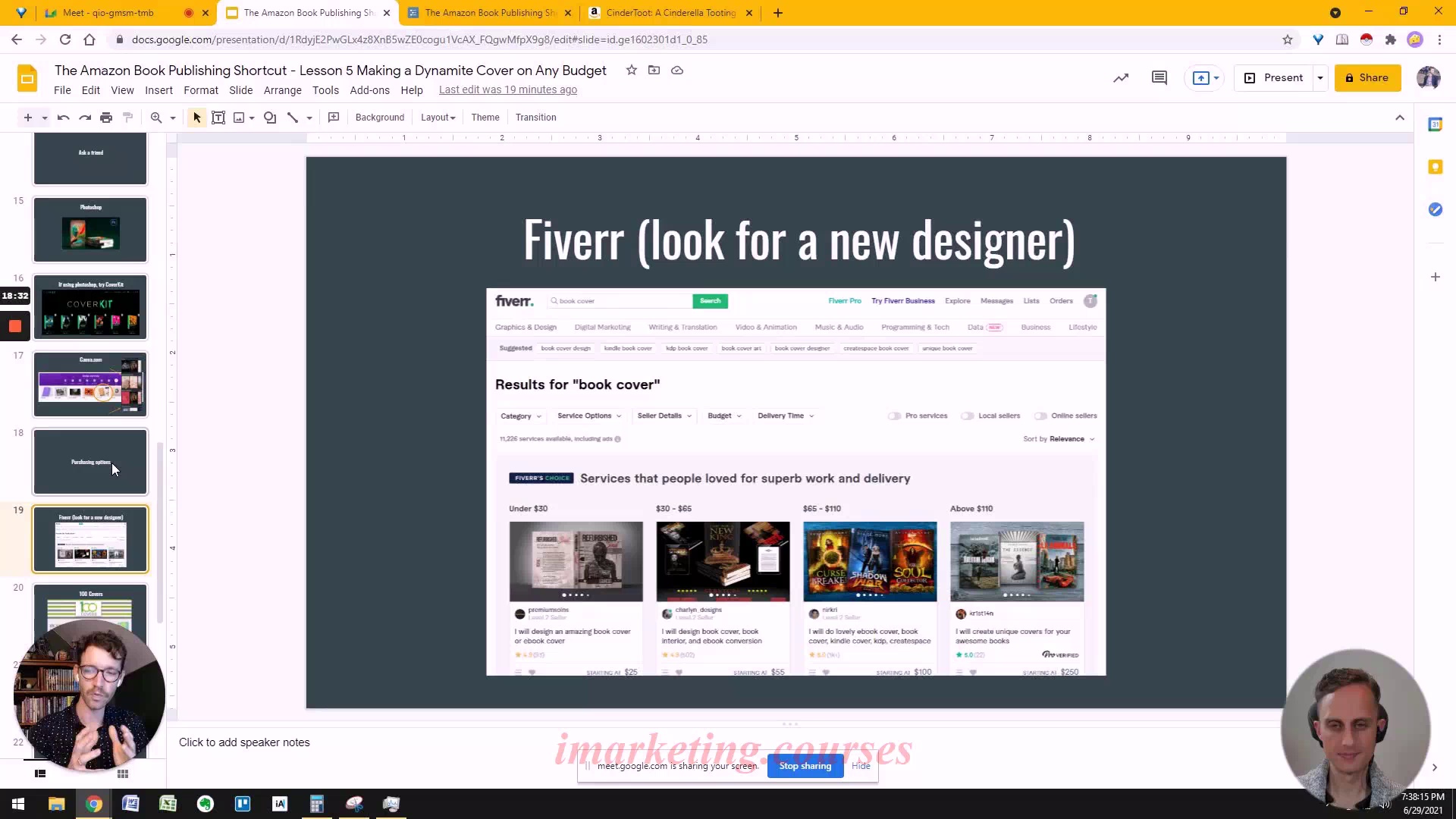
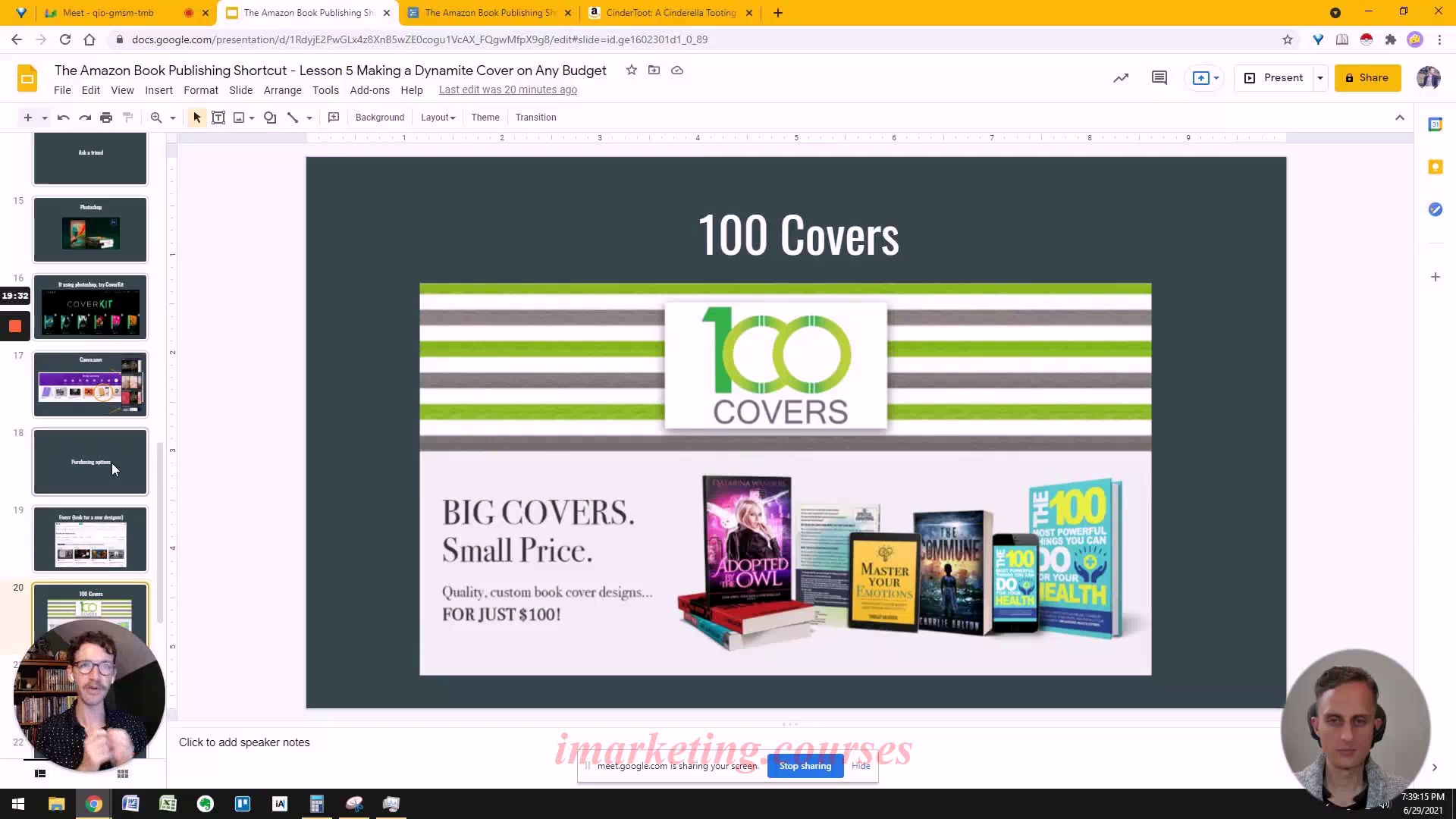
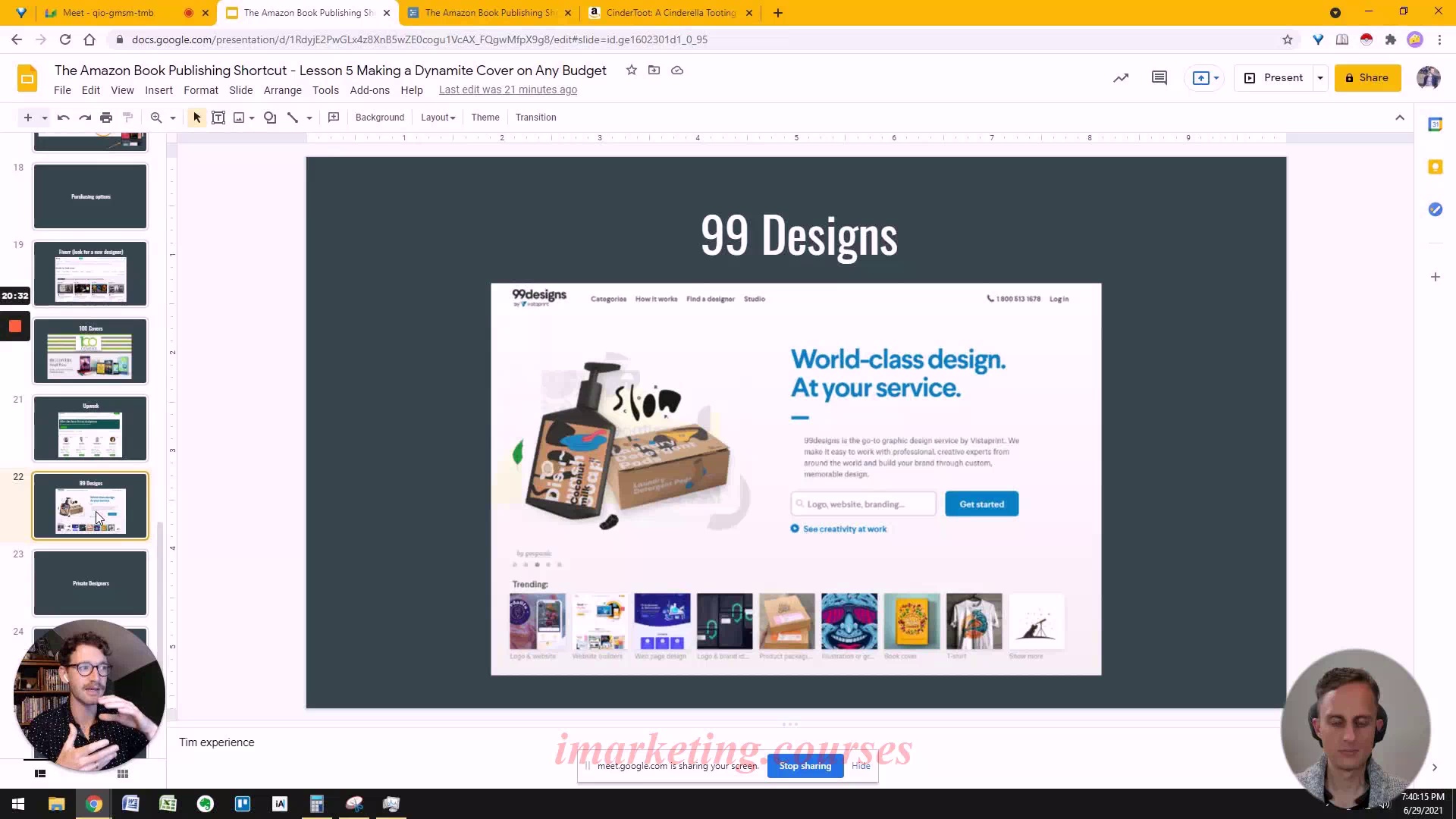
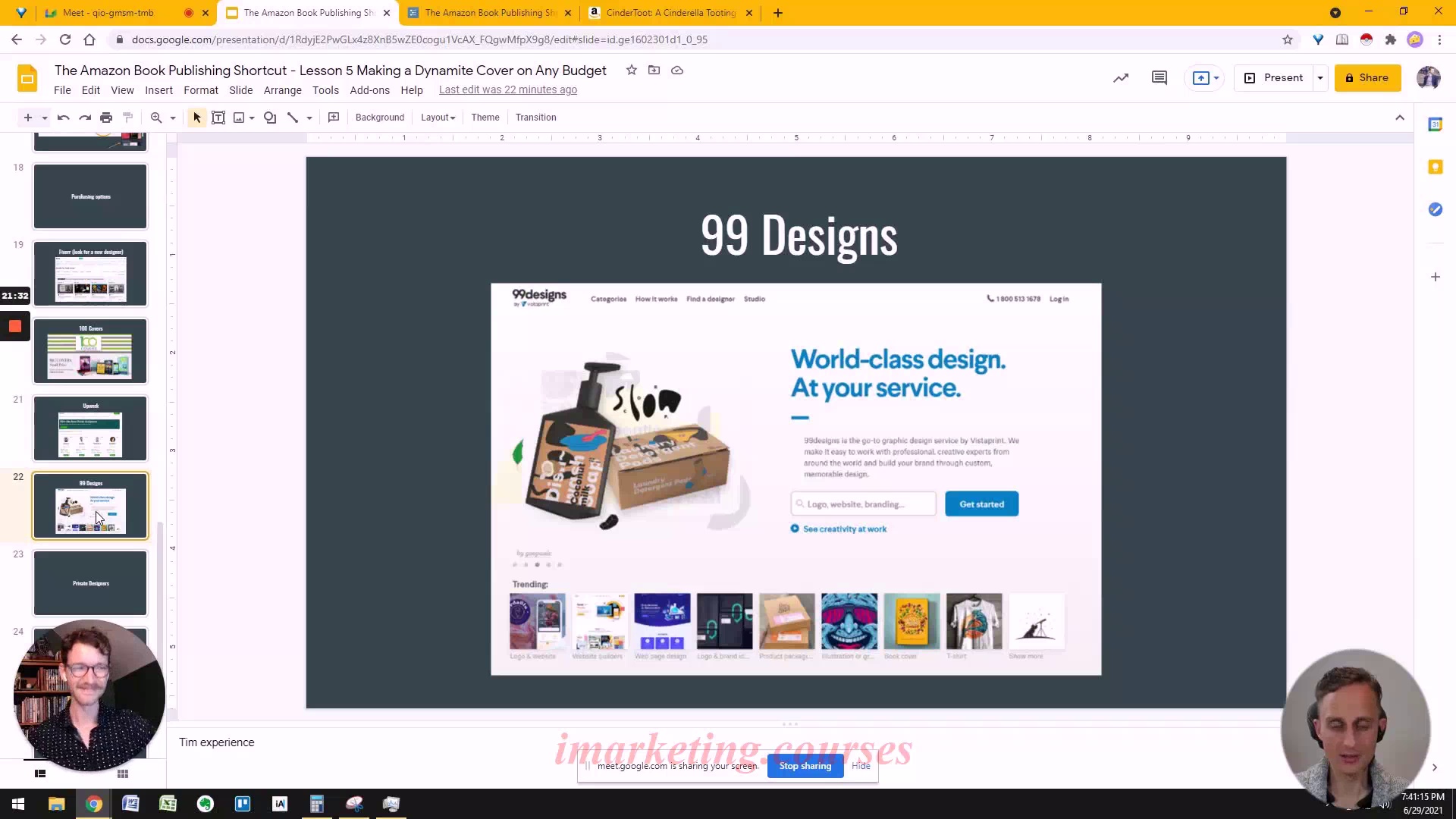
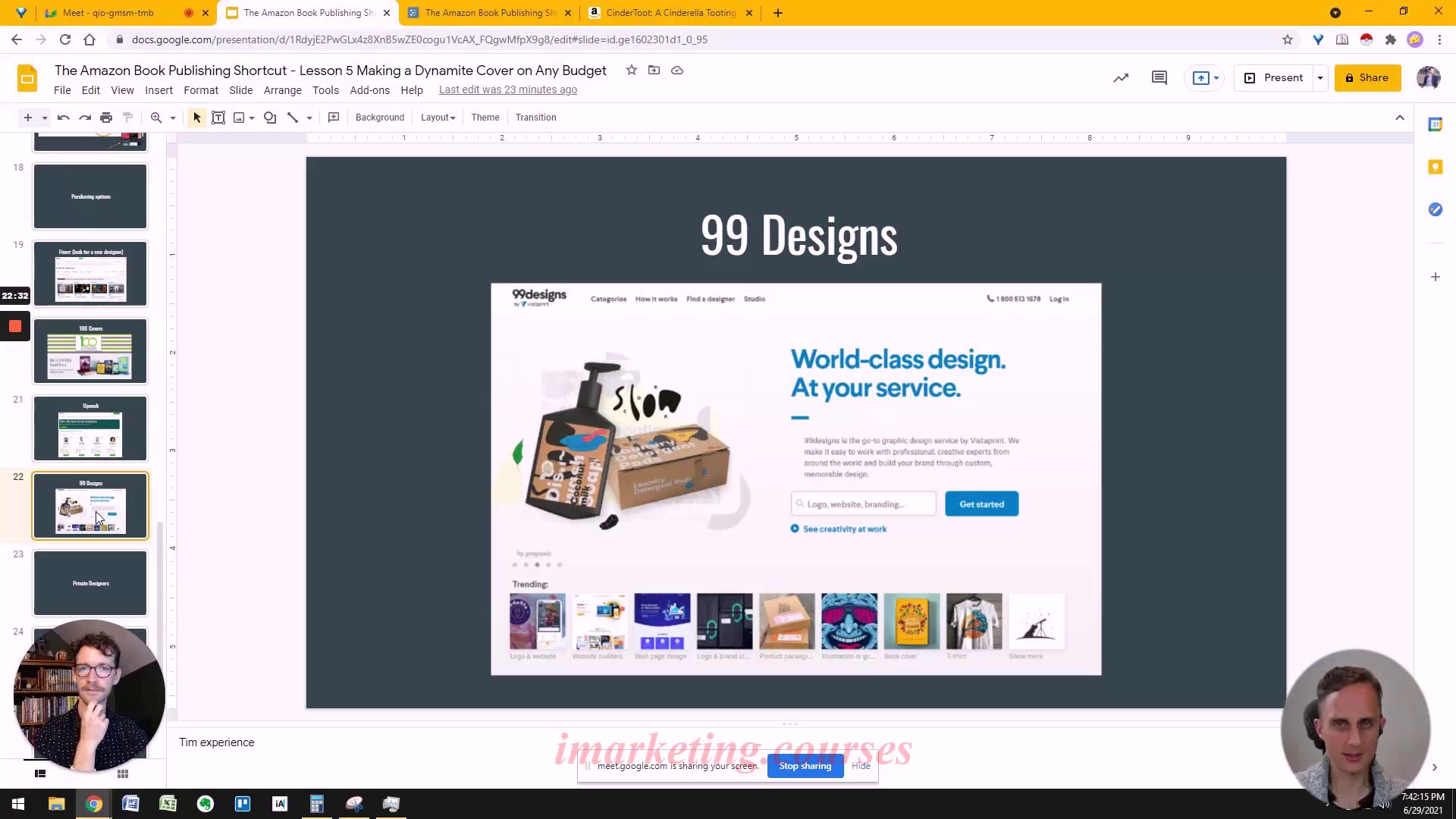
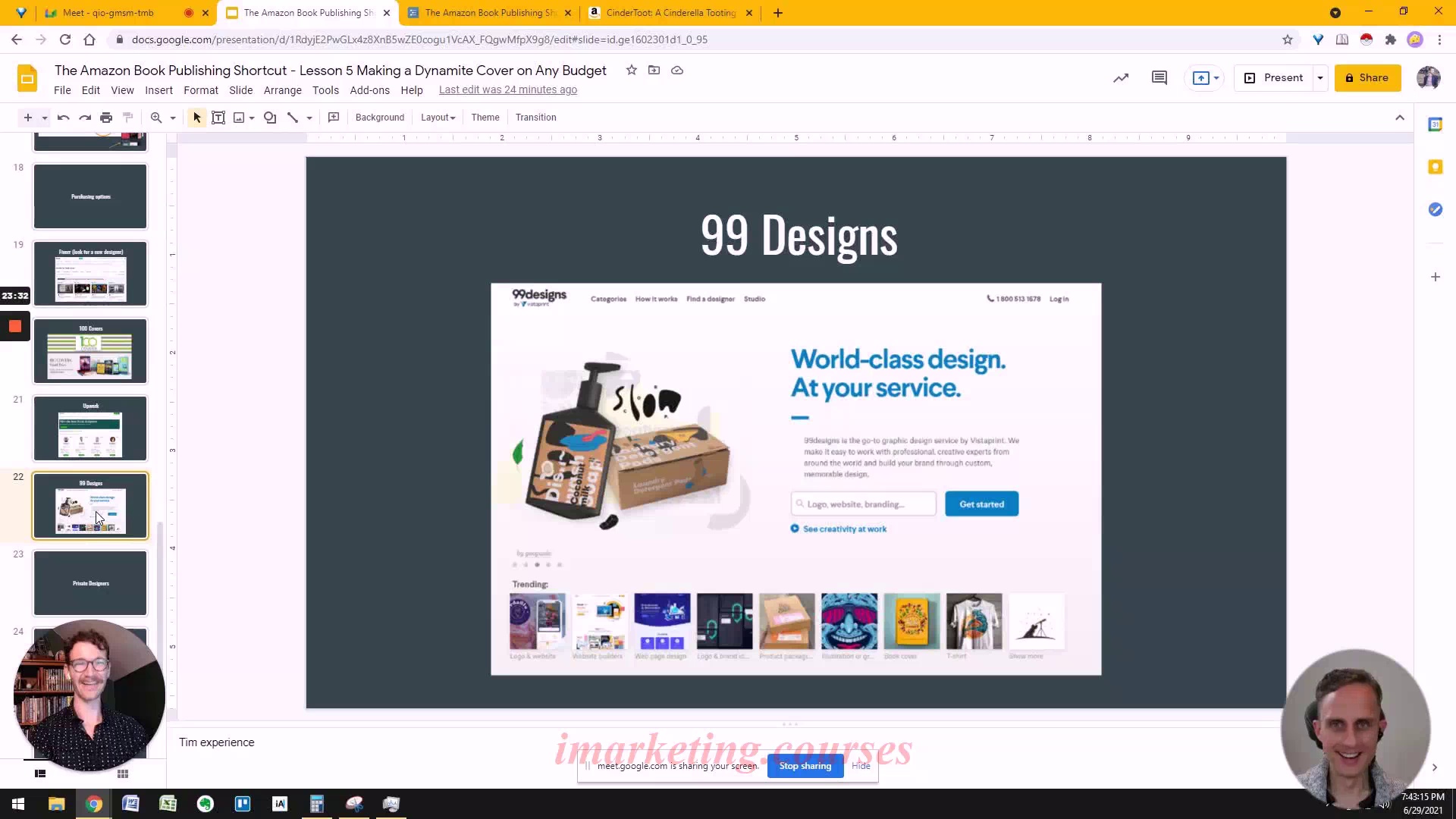
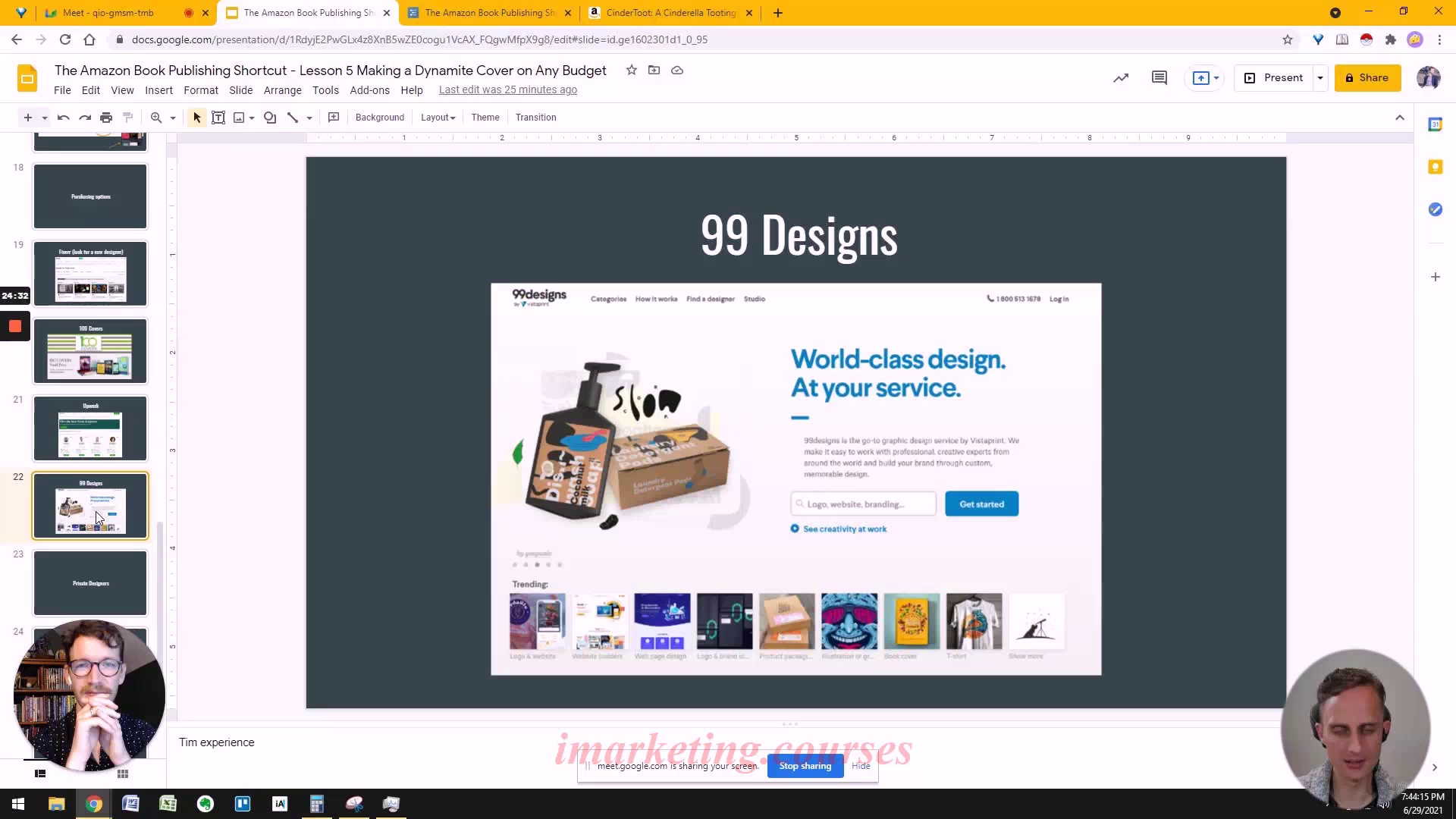

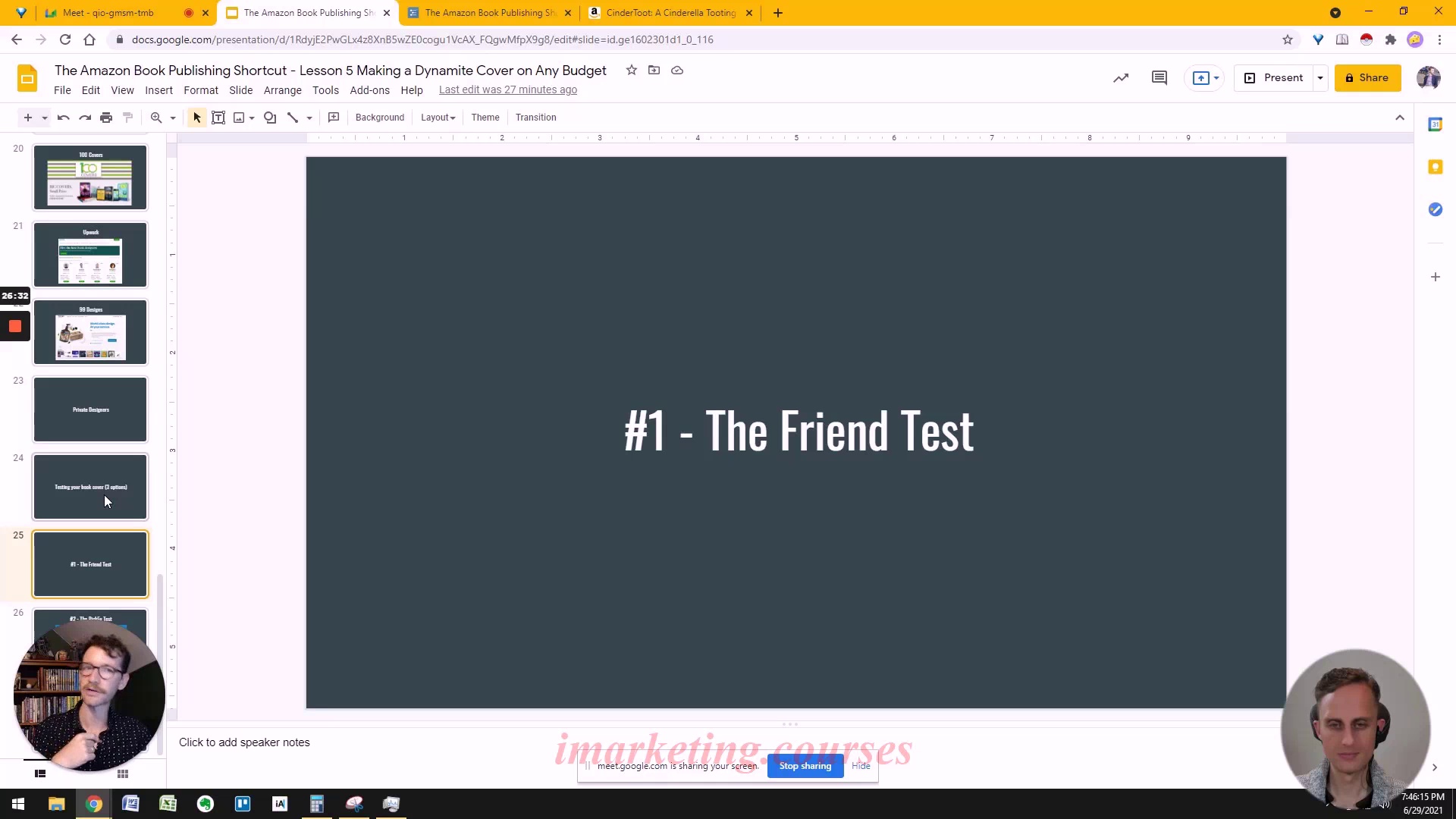
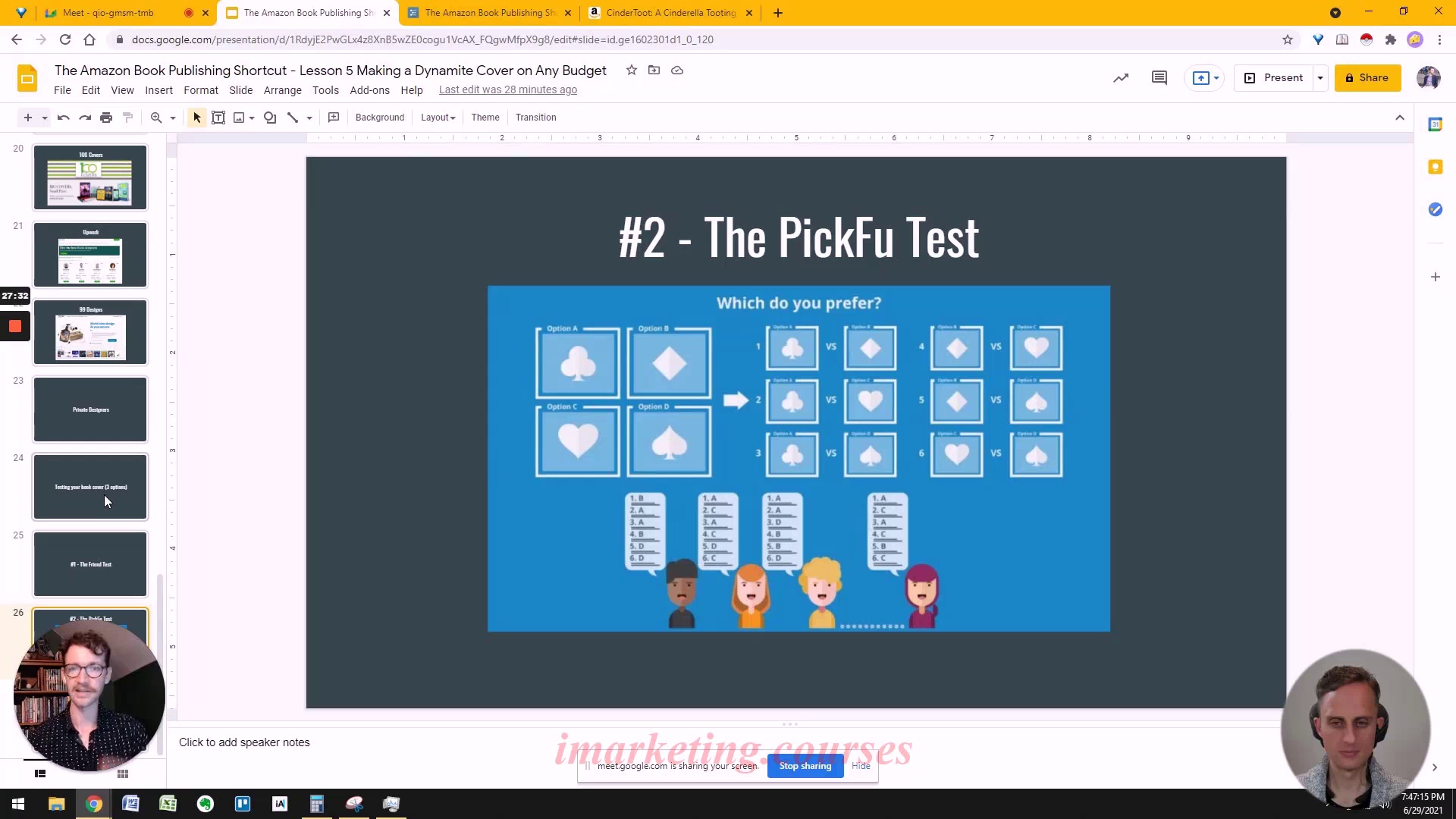
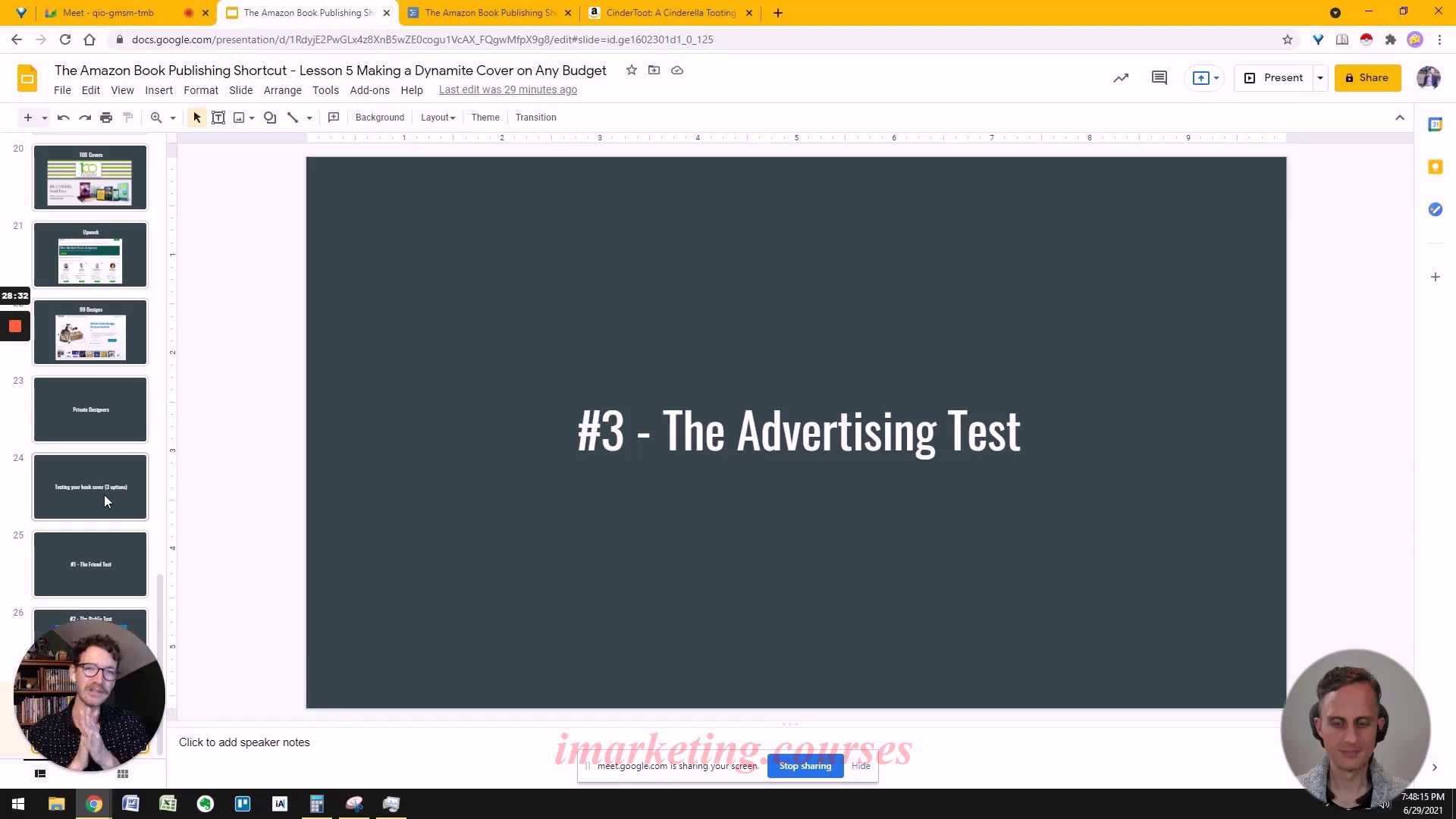
The narrator strongly advises against designing your own book cover unless you or someone you know is an expert designer. Hiring a friend can lead to hurt feelings if you don't like their work. Using templates from Canva, Photoshop, or Illustrator to design your own cover has major risks and likely won't stand out.
Fiverr offers affordable covers but designers often use templates. 100 Covers provides covers for $100 each. Upwork connects you with designers but some may be inexperienced. 99designs runs contests for designers to compete for your business, providing lots of options. Their higher tiers deliver better quality. The narrator collects feedback on designs from social media before selecting one.
Other options are hiring a professional illustrator invested in your project or testing covers by showing friends who read similar books, using PickFu's survey service, or running Amazon or Facebook ads. Testing covers this way provides valuable data to inform your decision.
.Tim-D-AmazonBookPubl 1.3 to 6.2 - Part 5








































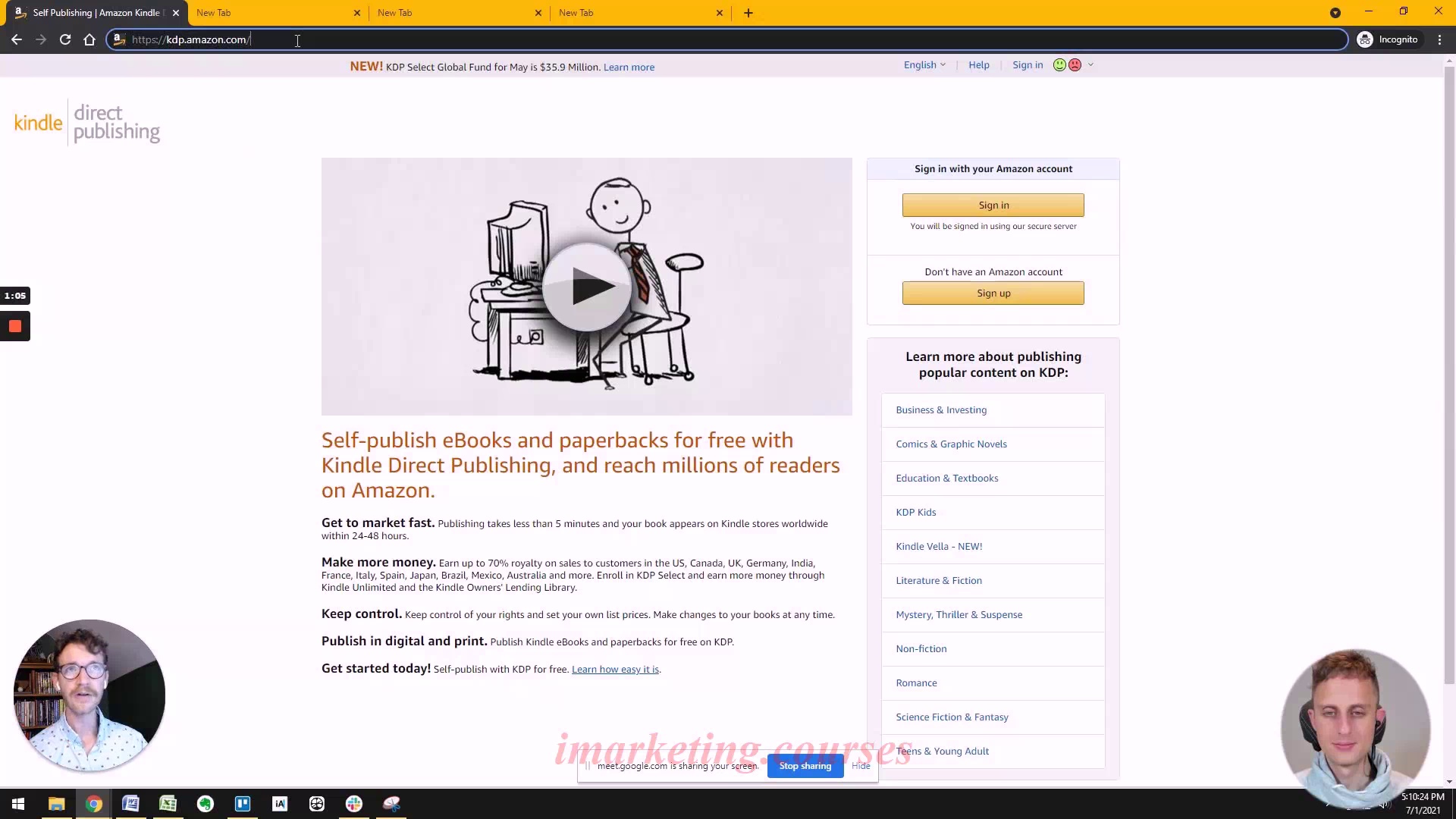
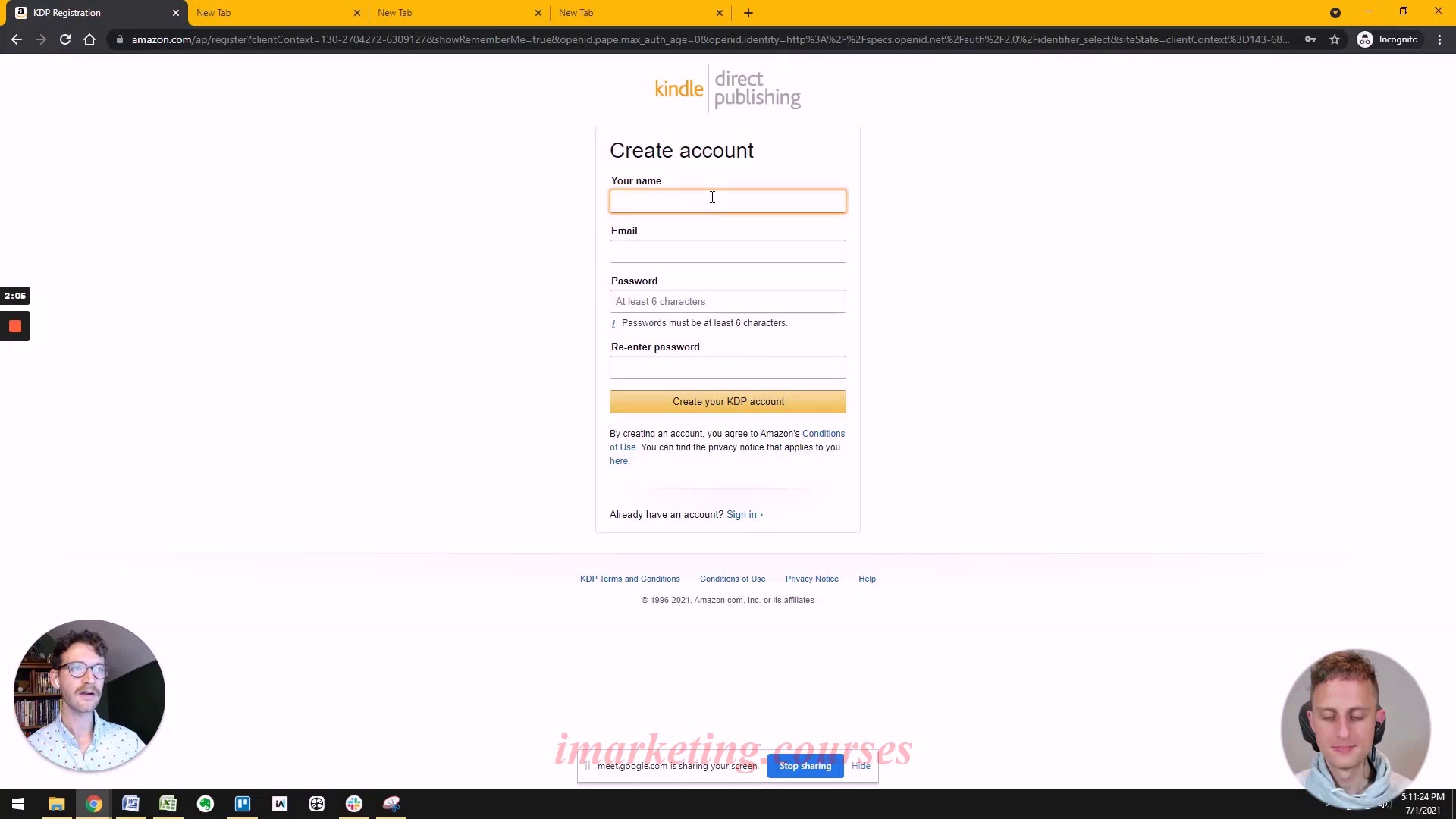

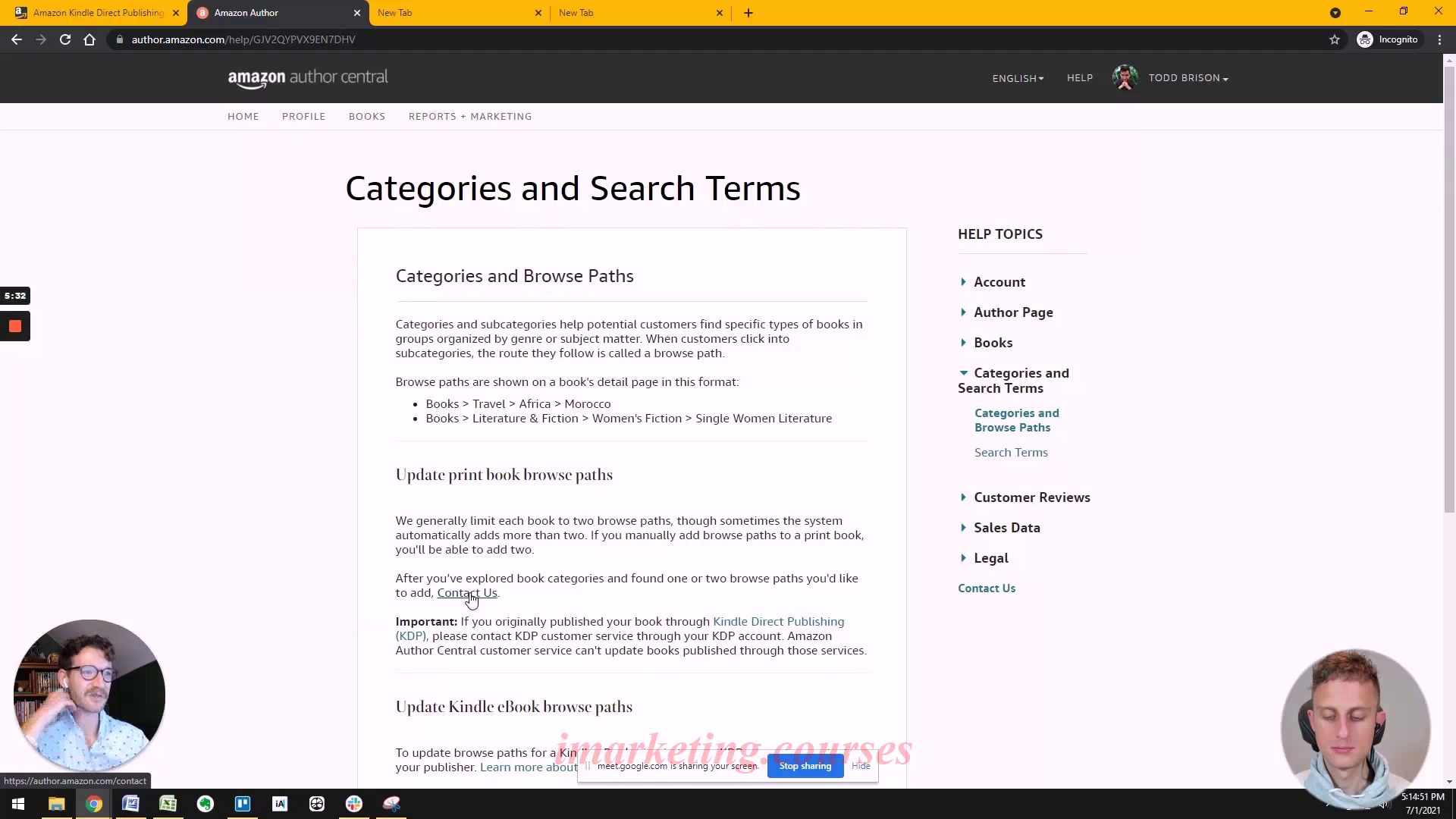

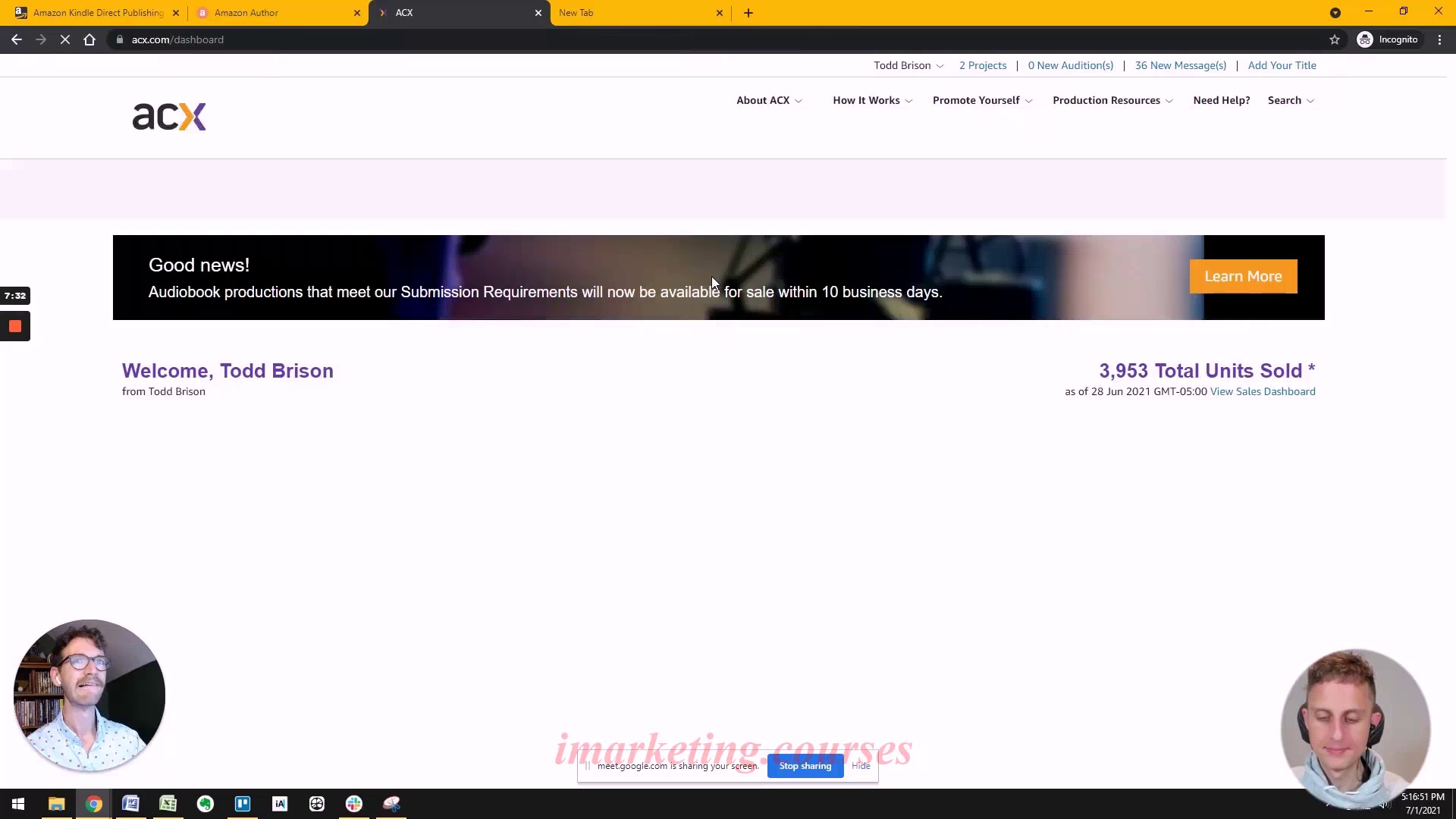

The narrator walks through the main Amazon dashboards for publishing and monitoring books: KDP, Author Central, ACX, and KDP Reports.
KDP is for uploading and managing books. Author Central helps update categories and keywords to improve search and discovery. Its help section has a template for changing book categories.
ACX is the audiobook platform. The narrator recommends locking down your ACX account to prevent audiobook scams.
KDP Reports shows real-time earnings and sales data in colorful graphs. Using all four dashboards gives control over publishing, marketing, and monitoring books.
.